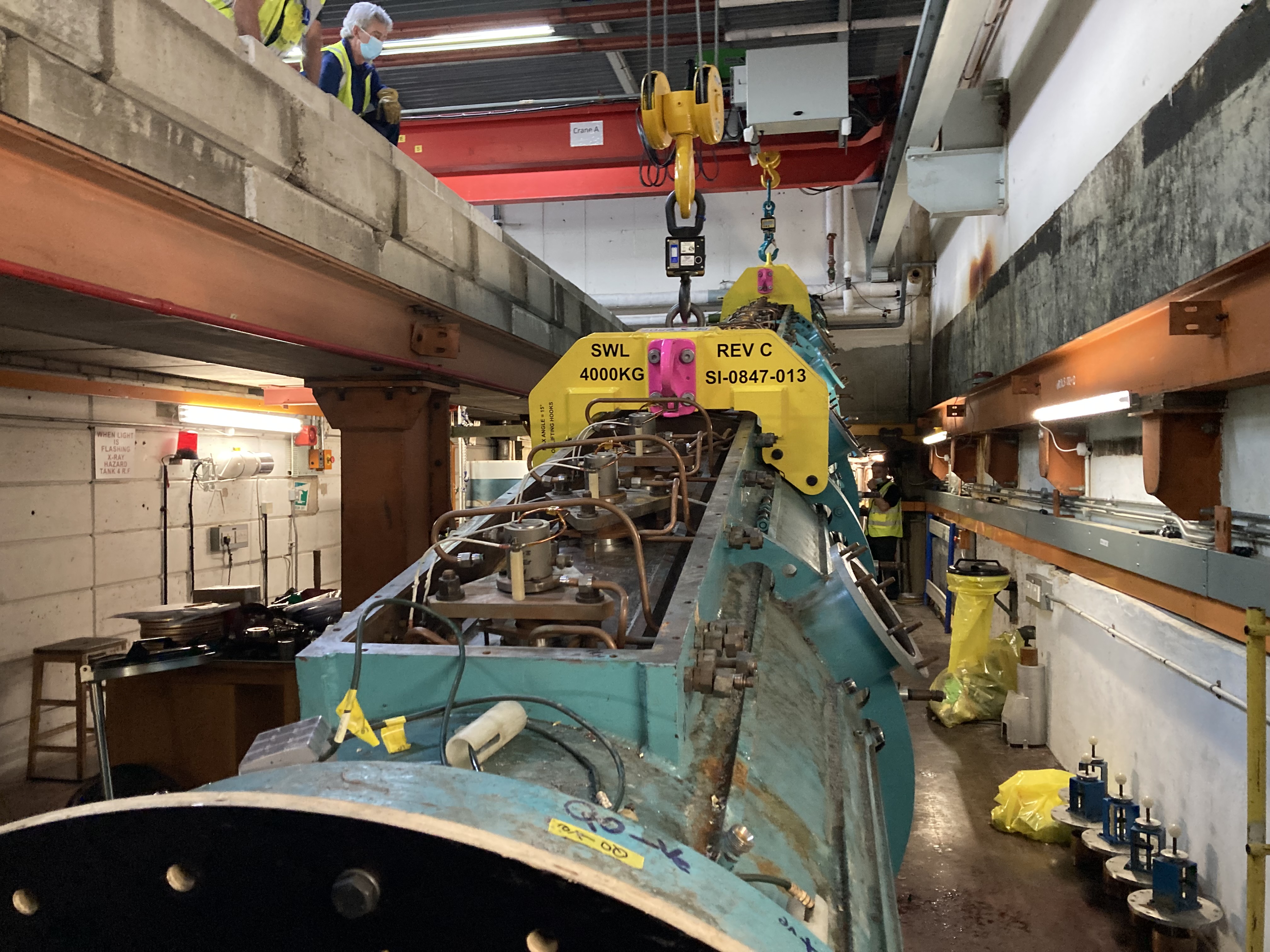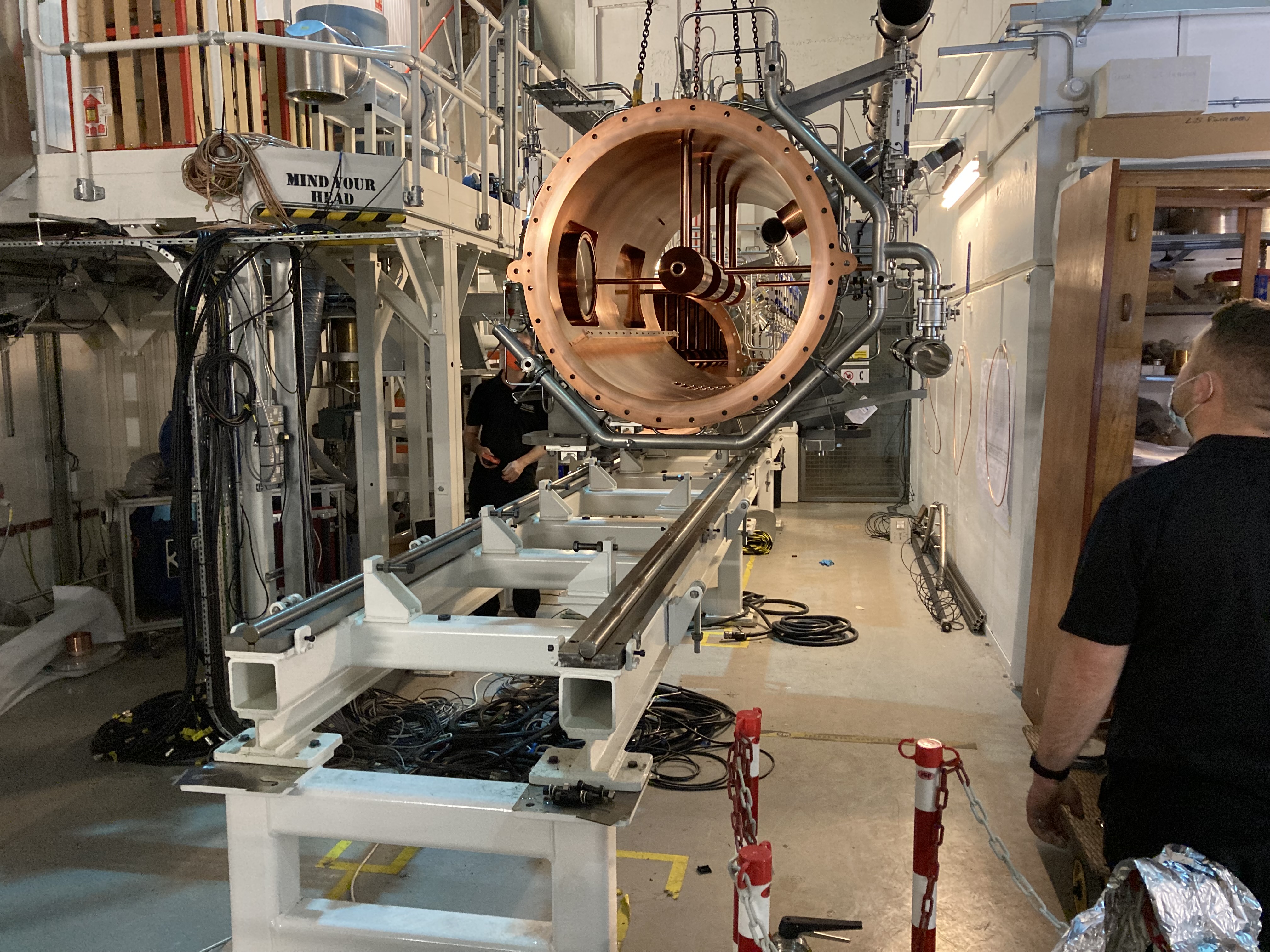4 August 2022 - New TS1 target in place
The last piece of the target, reflector and moderator (TRaM) has been lifted into the remote handling cell as the TS1 project reaches its latest milestone. The front side of the reflector assembly was installed this week, completing this stage of the assembly process. The star of the show, the new target, was lifted into the remote handling cell last week, using a cantilever frame designed specifically by the team for this purpose, as shown in the
video in this article.
29 June 2022 - Cantilever frame lifted into TSA
The moderators and cantilever frame were lifted into the target services area in TS1.
3 May 2022 - New muon collimator installation
The new muon collimator has been lifted into place, and the team will move on to vacuum testing before
continuing with the install of remaining components.
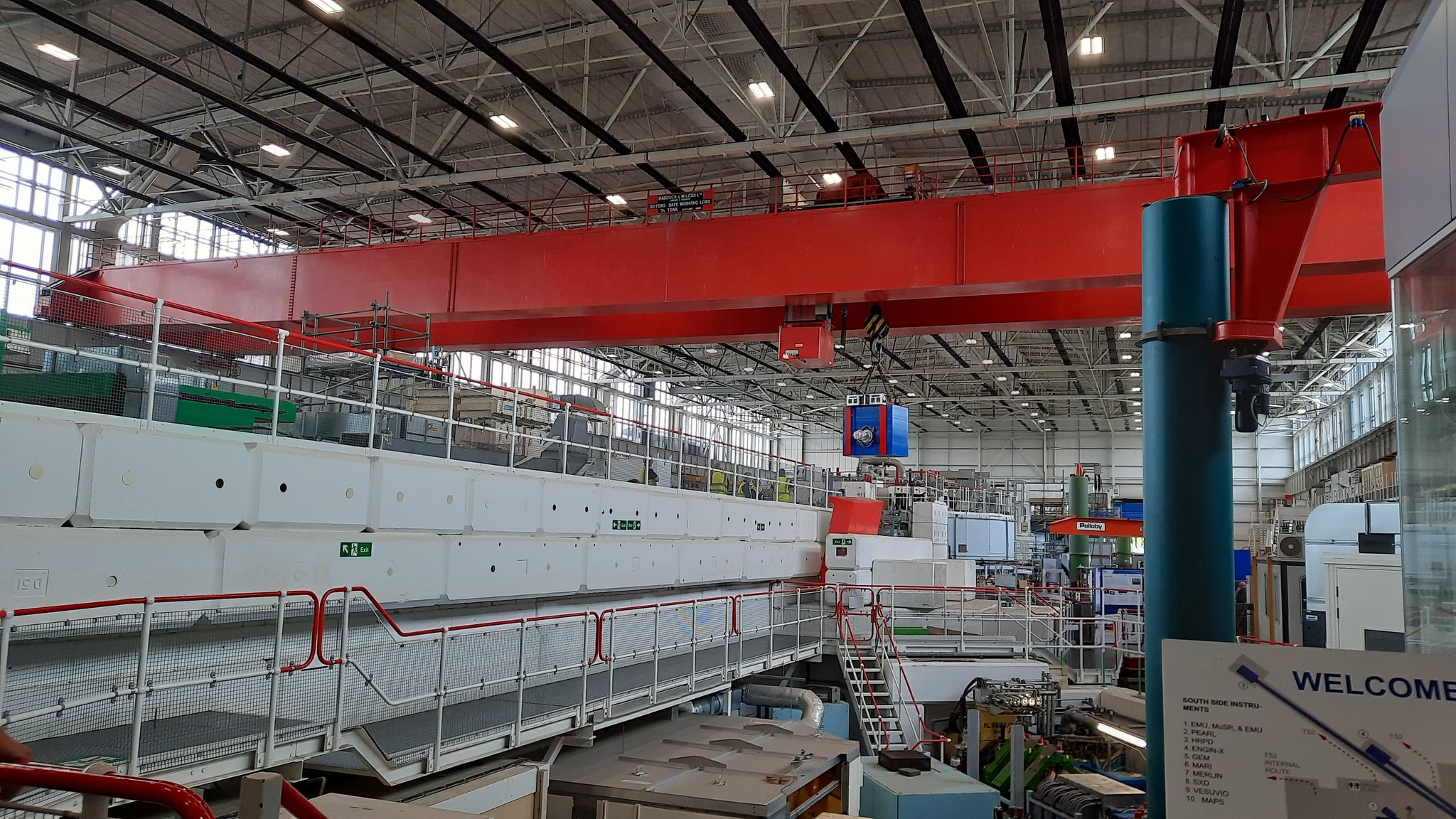
3 May 2022 - Muon collimator removal
The leaking muon collimator has been removed, in preparation for its replacement to be installed. This was particularly challenging given the radiation levels in the area, which had previously been mapped out using a drone. Therefore extra precautions were taken to monitor the radiation levels that staff were exposed to during its removal.

.JPEG)
April 2022 - RIKEN-RAL refurbishment
The RIKEN-RAL beamlines in TS1 are being refursbished as part of the long shutdown. Once the mezzanine floor had been removed, the old cabling, pipework and controls systems were removed. They have now all been replaced and commissioning can begin.
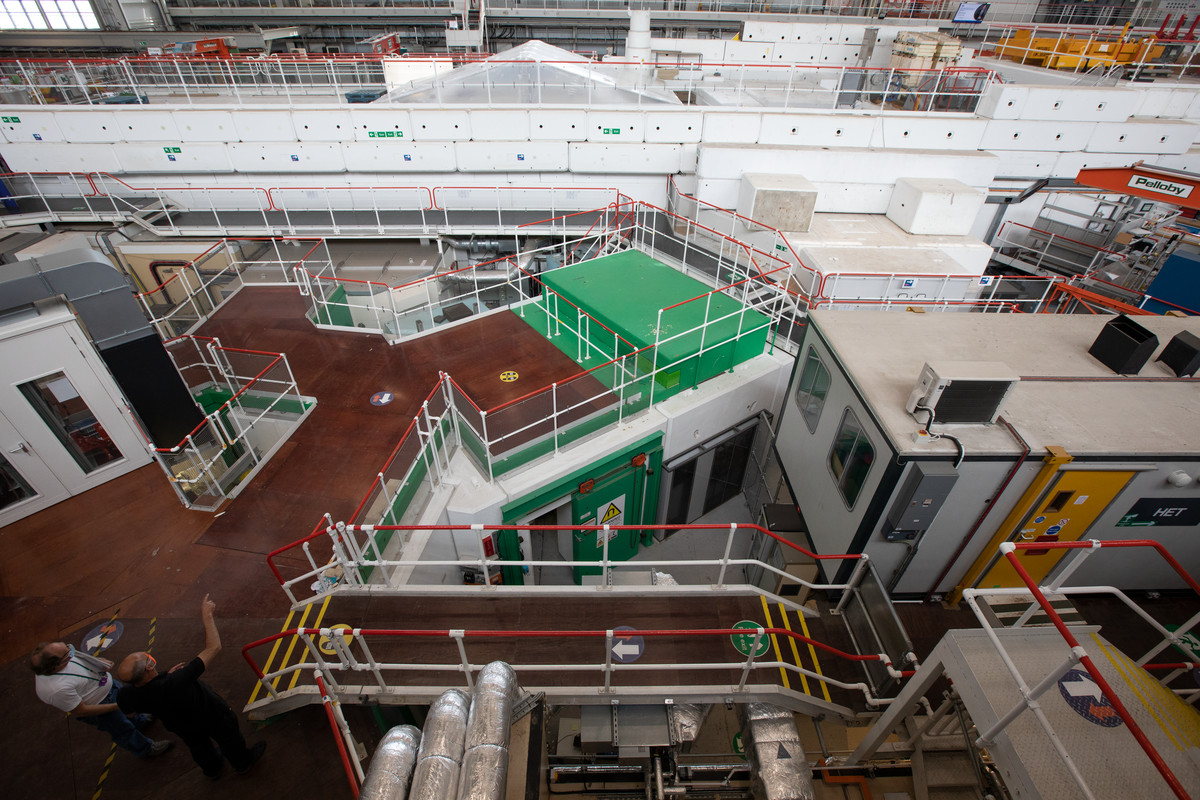
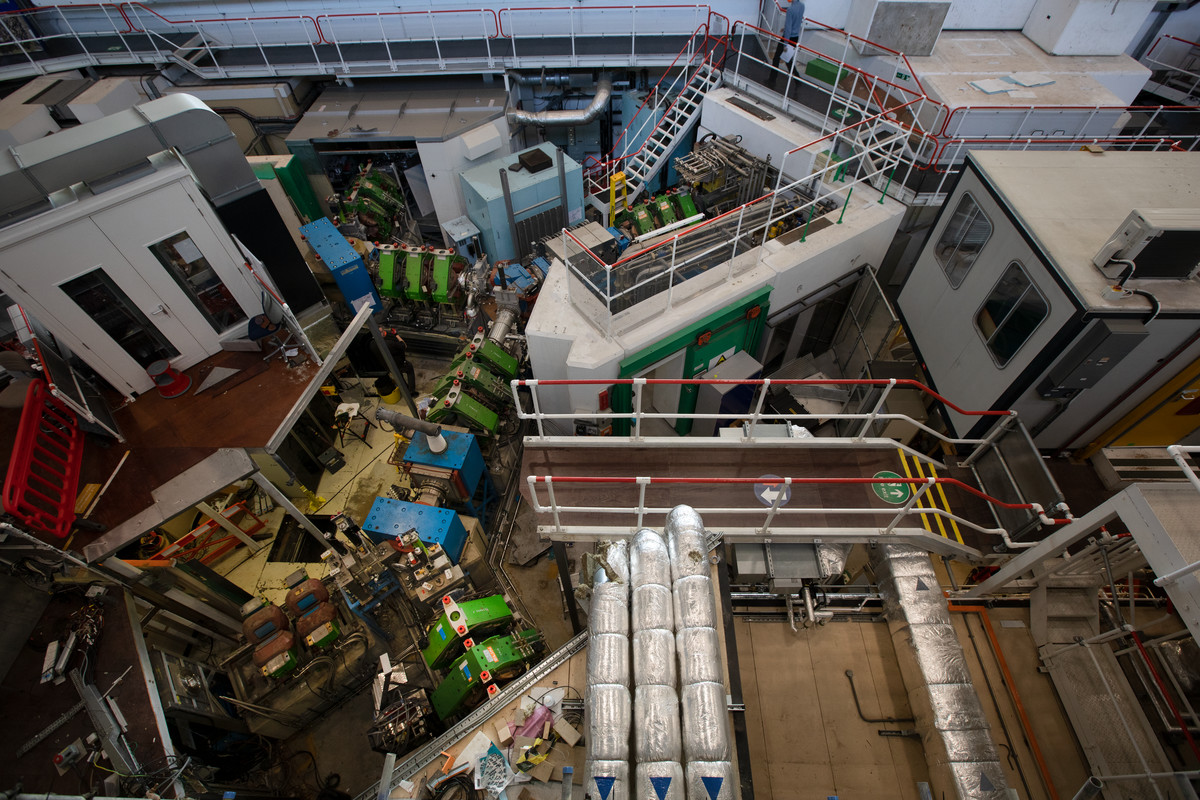
13 April 2022 - Installation of the cold boxes into TS1 target services area
The two cold boxes, which will provide the cryogenic hydrogen and methane for the TS1 moderators have been lifted into place. Inside each one are valves and circulators that make sure the cryogens to flow in the right places, at the right pressures and at the right time.
24 March 2022 - HiFi Instrument removed
The HiFi Muon instrument was removed from Target Station 1 for maintenance work. This was the first time that the instrument has been moved since its installation.
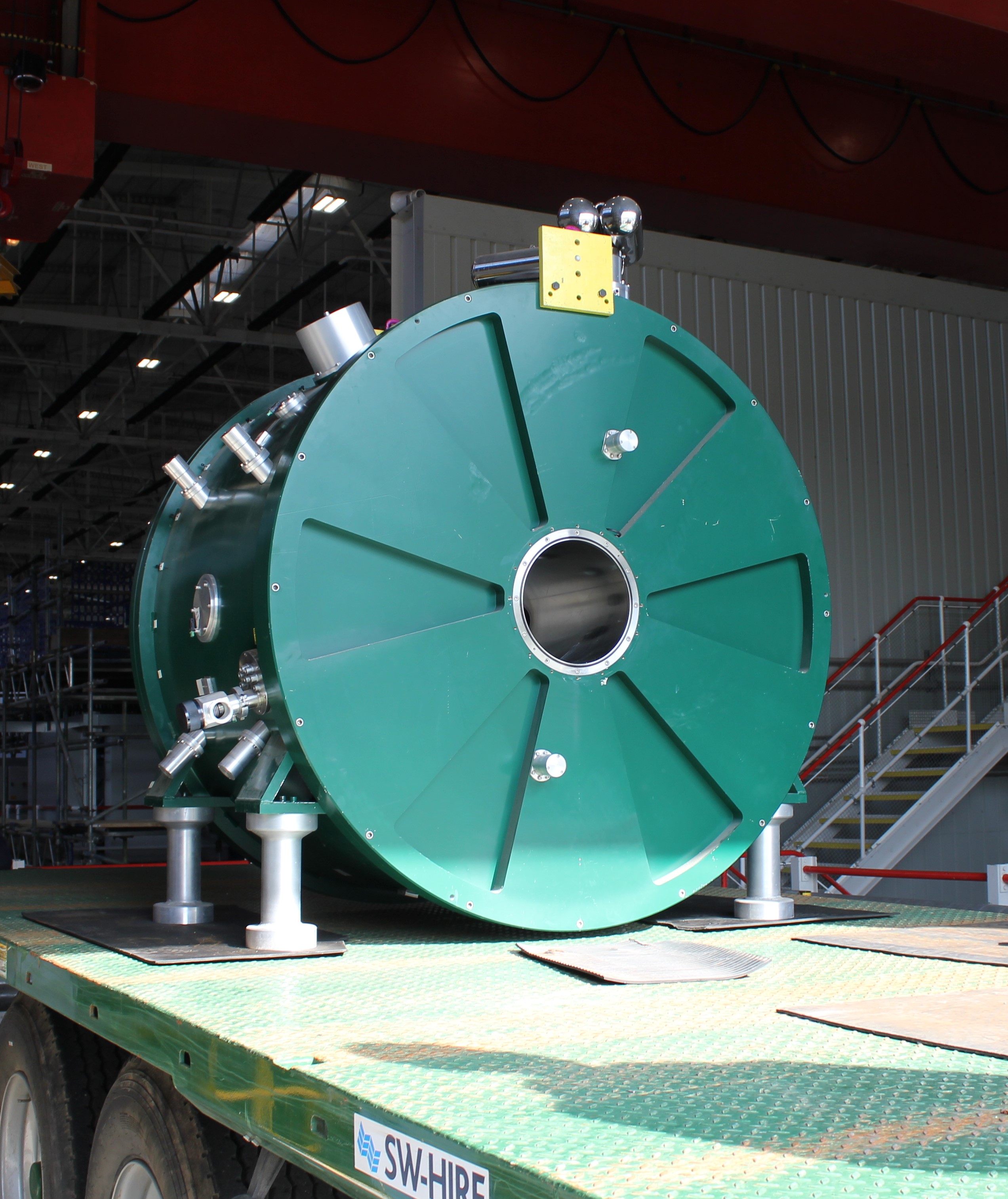

10 March 2022 - EPB1 Muon Collimator Repair
Prebuild for a new collimator assembly has been conducted for the repair or replacement to the existing one, due to a water leak on the cooling pipes which developed during the user run. As this is in a highly radioactive area of the extracted proton beamline (EPB), the assembly has been built and tested elsewhere. Trial runs, as shown in the video below, have been performed for each task to gain operational experience, test the engineering process and gain accurate duration times to minimise exposure within the area.
16 February 2022 - SANS2D front end
A project has been going on during the shutdown to improve the performance and reliability of the guides. The team have changed the motor drives and control system for the 5x 3500kg moving guide blocks. They are now installed and ready for the shielding to be put back on.
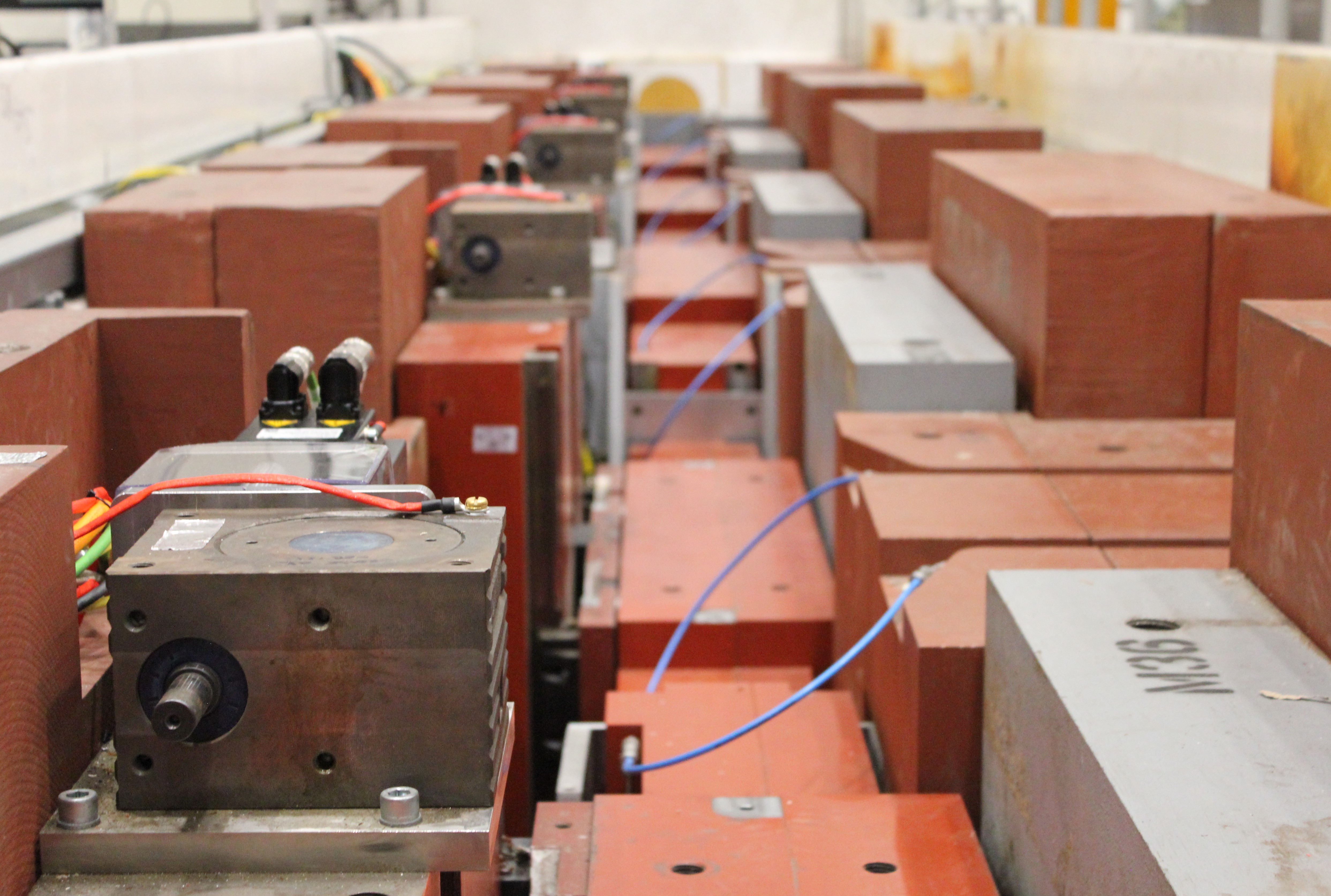
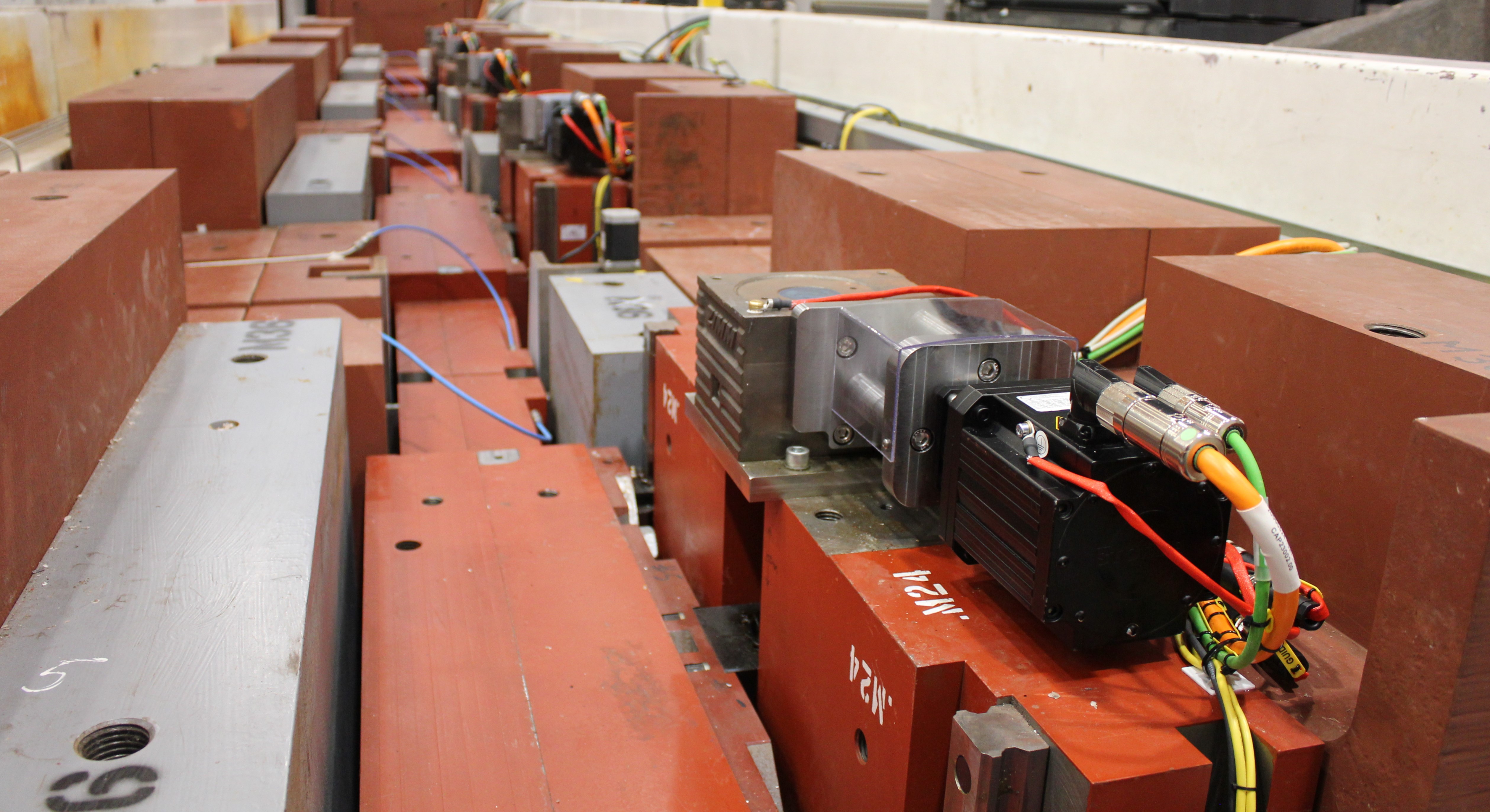

SANDALS front end upgrade
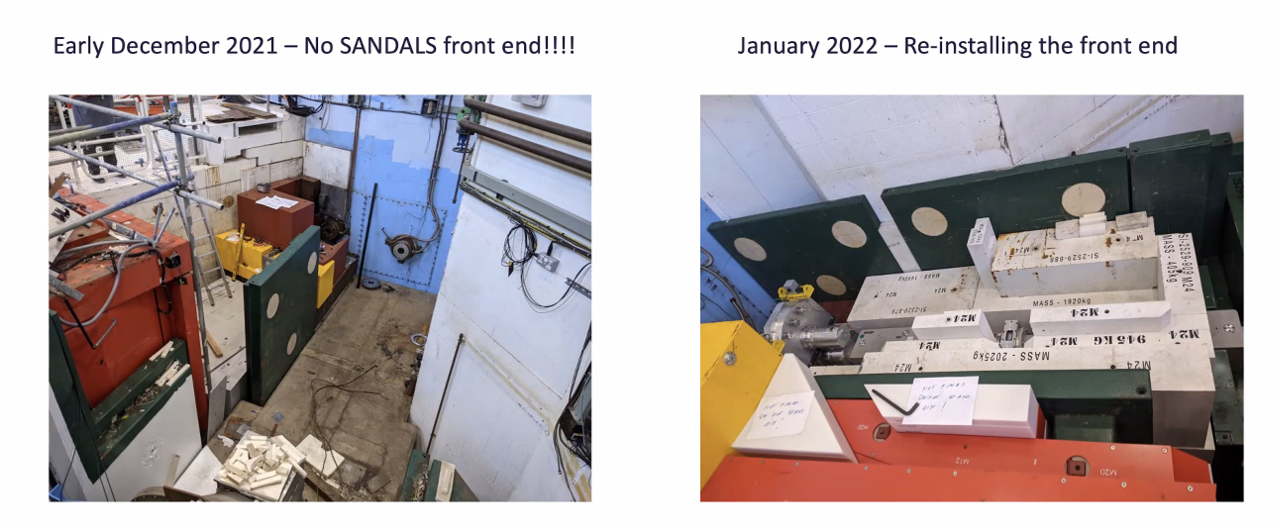
Reflector assembly
The TS1 Project team are busy piecing together the new reflector assembly. It's made of 13 beryllium blocks but, in total, has over 1500 pieces!
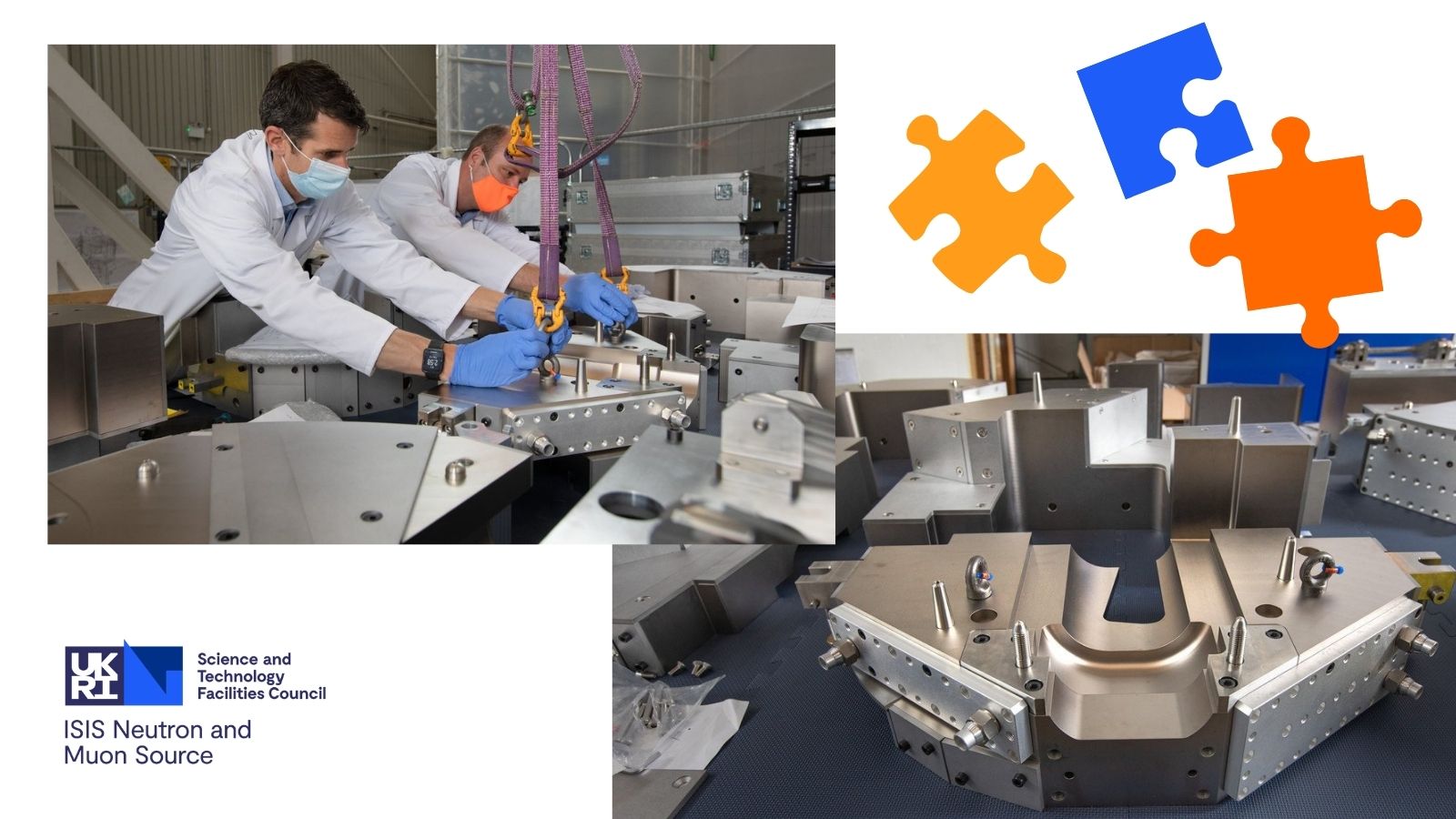
RF system upgrade
During the long shutdown, the ISIS synchrotron RF section have replaced all six of the fundamental RF systems that drive the synchrotron acceleration. This will not only make them more reliable and easier to maintain, but will lead to a huge reduction in ISIS' electricity demand.
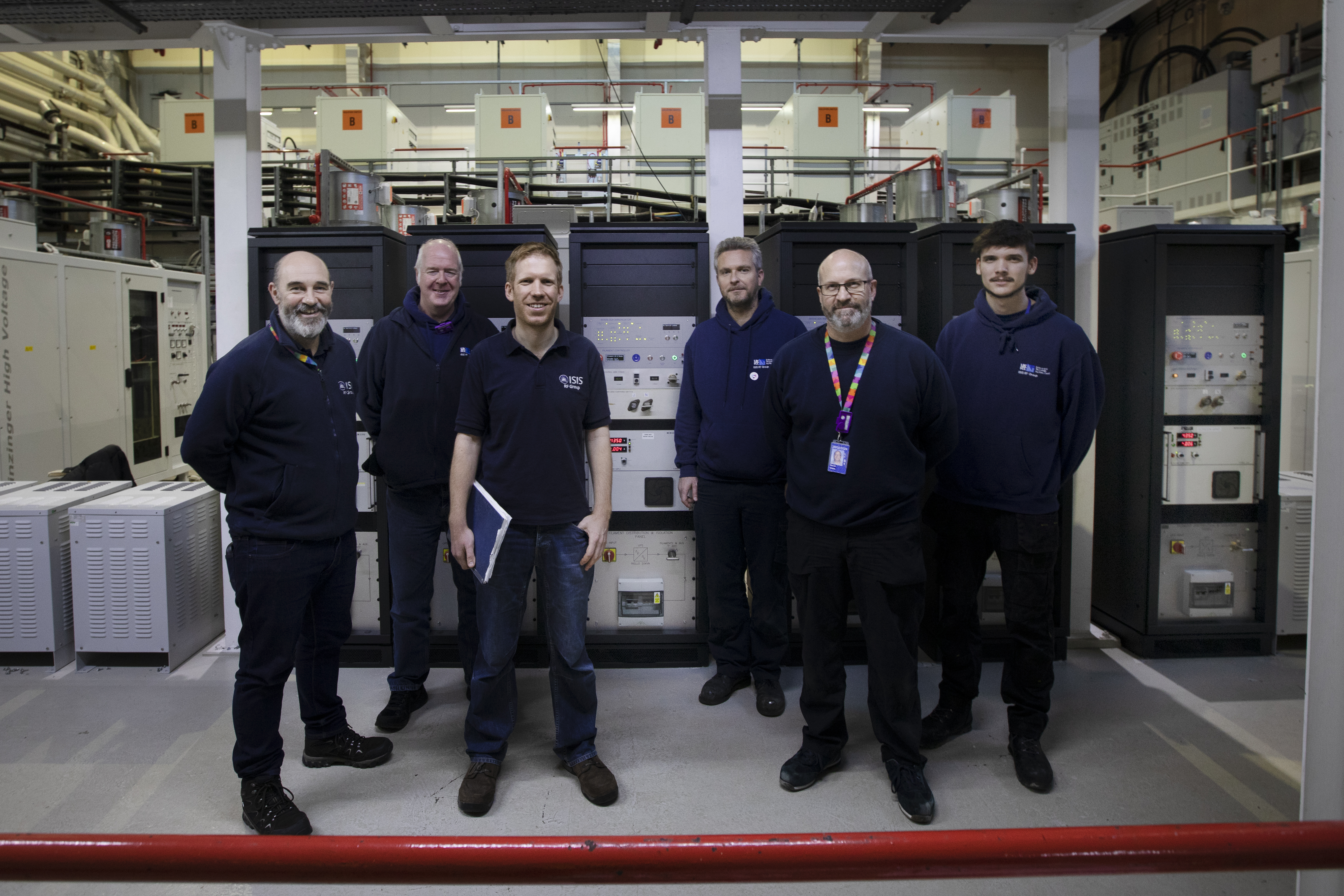
7 January
It's the new year and the first new piece of kit has been installed into the target assembly area. The new crane was lifted into place, and can take up to three times more weight than the one previously present in the area. This means that the team will be able to move more equipment without the need to remove the roof and use the larger crane in the TS1 hall.
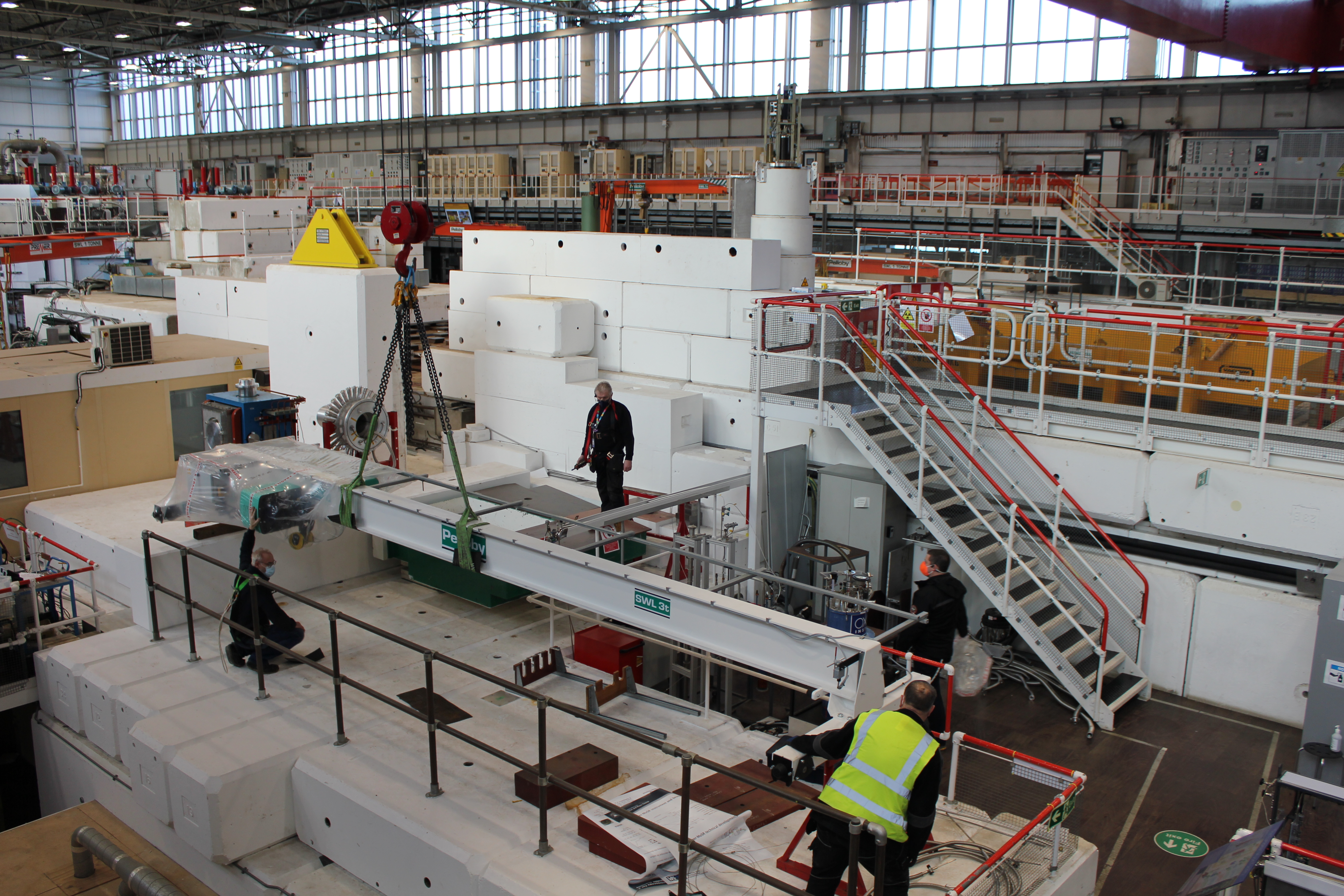
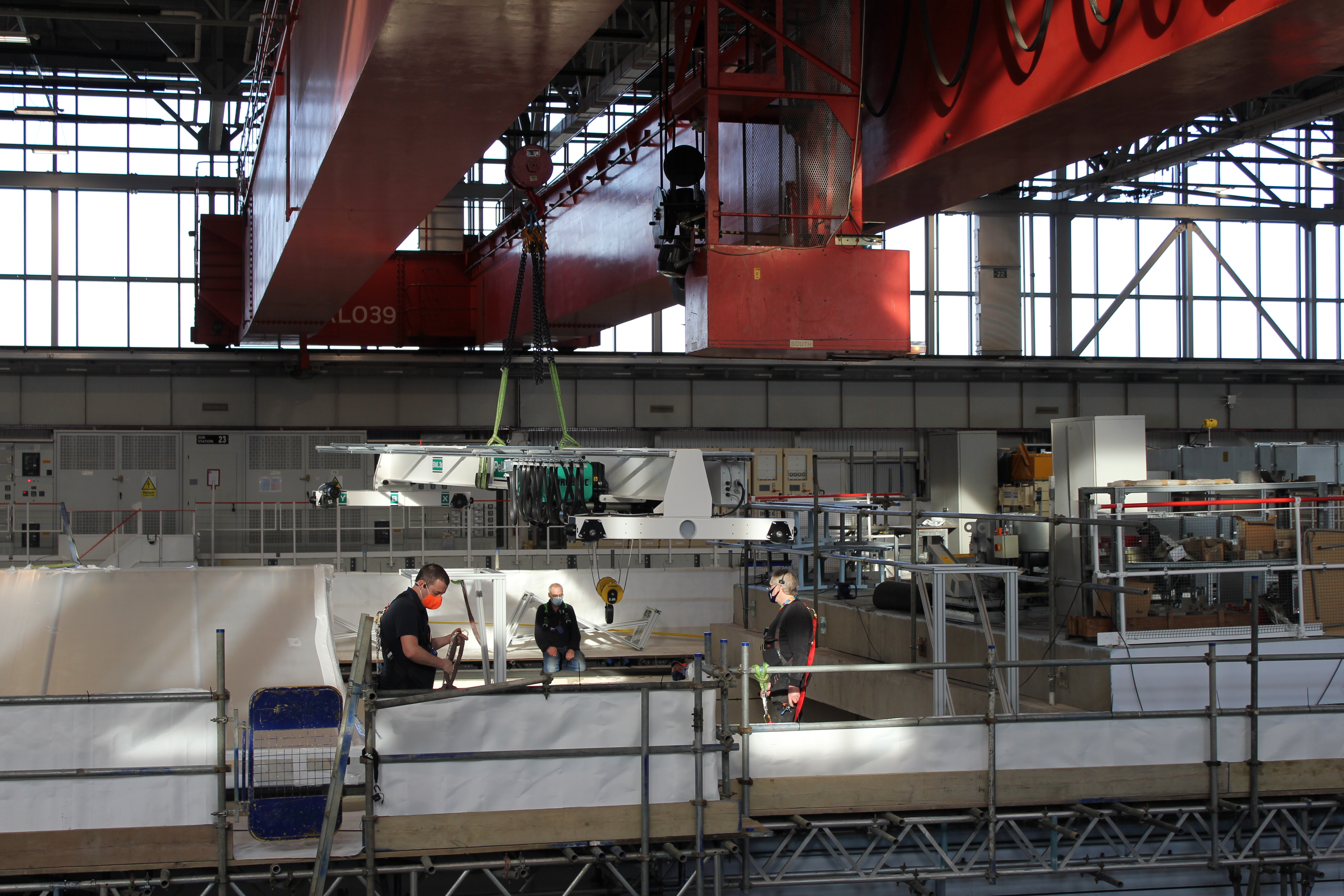
17 December
The new TS1 hydrogen moderator has arrived, as the last piece of the puzzle for the TS1 project TRaM.
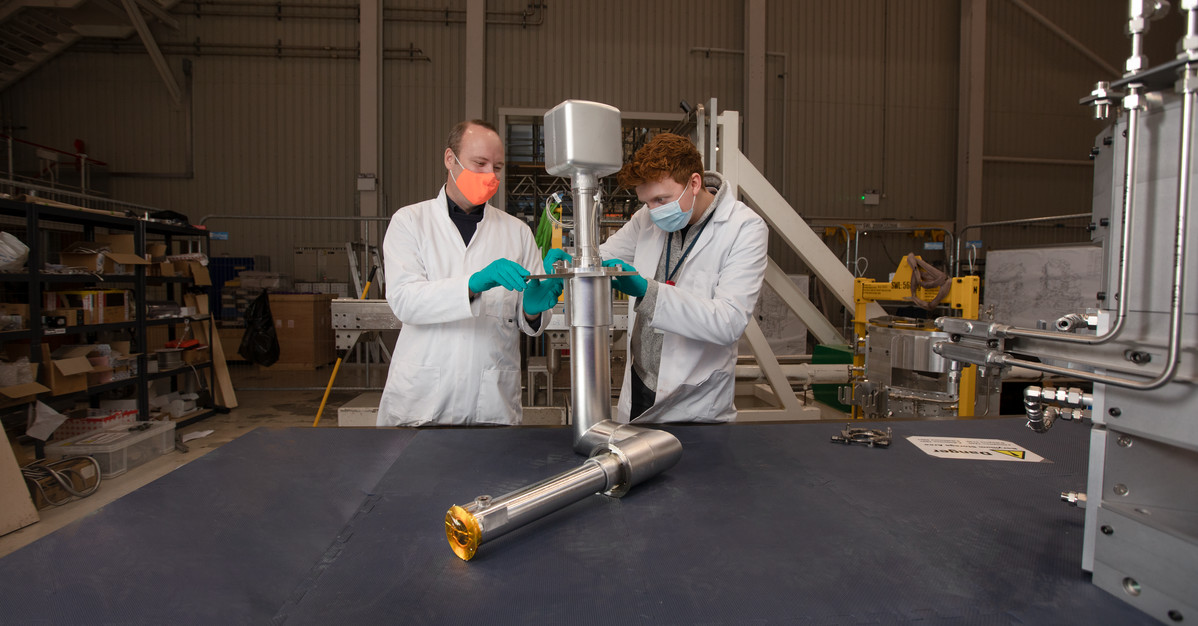
7 December
First beam accelerated through the new linac tank 4! After a journey of almost 10 years, taking us from initial design work, through manufacture and testing and ultimately installation onto ISIS, the team were elated to see the tank successfully accelerate a beam. Not only did it accelerate – we were rewarded with a 94% transmission efficiency on the first attempt!
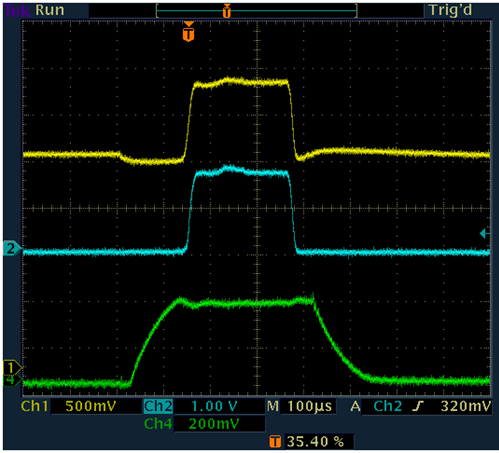
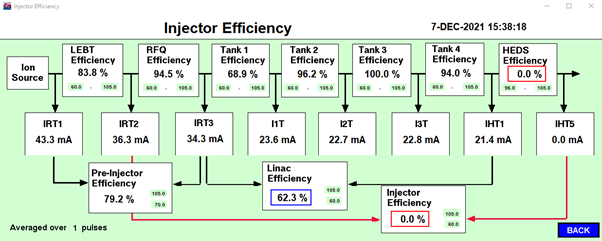
2 December
To prepare for work on the collimator just after the muon producing target in the extracted proton beamline, ISIS engineers have been using a drone to map the radiation levels in the area.
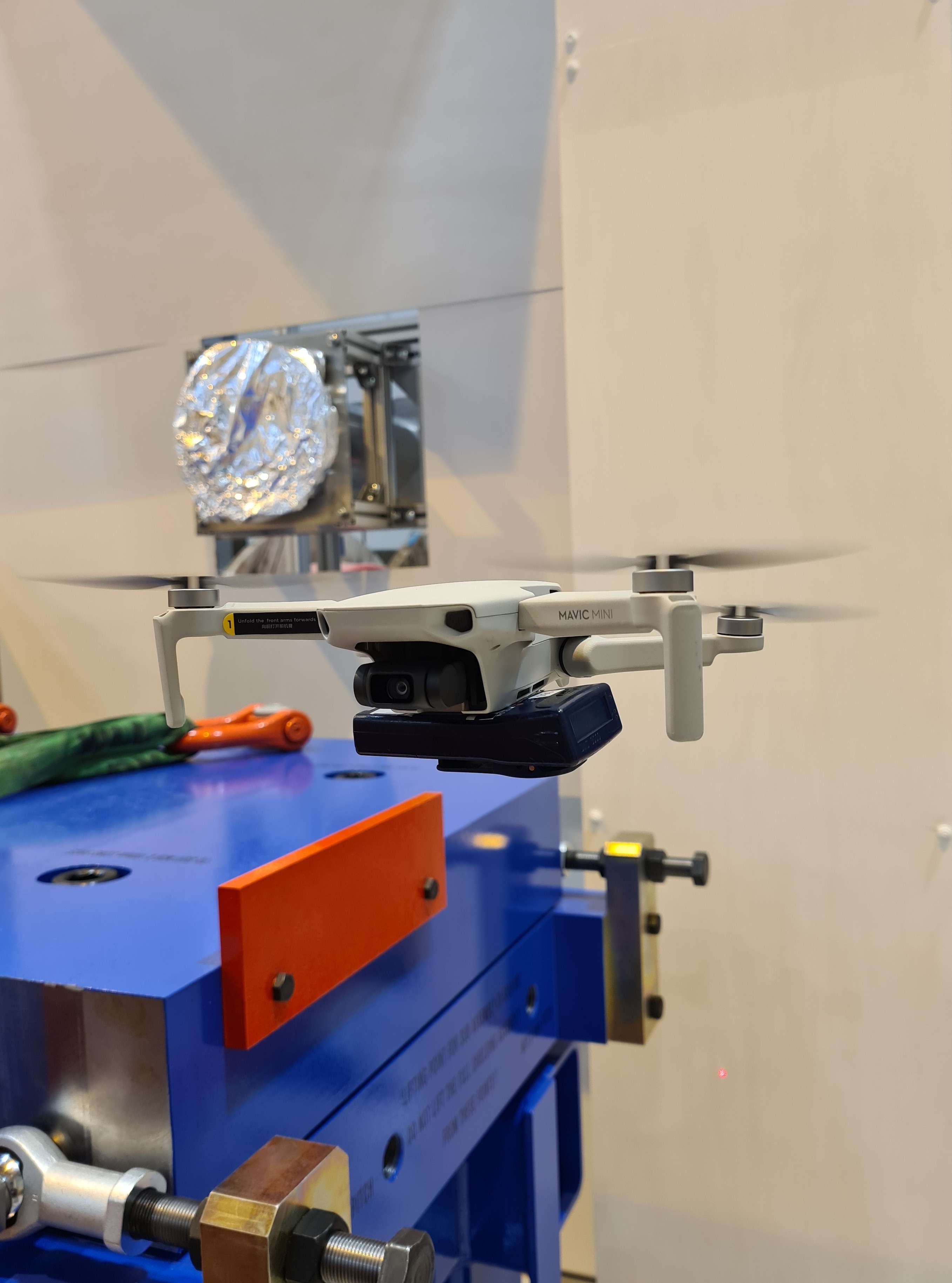
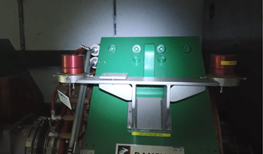
23 November
To prepare for installation of the new target assembly in TS1, the roof lintels were removed and replaced with a temporary roof.
10 November
The new synchrotron room beam dump diagnostics assembly has been installed.
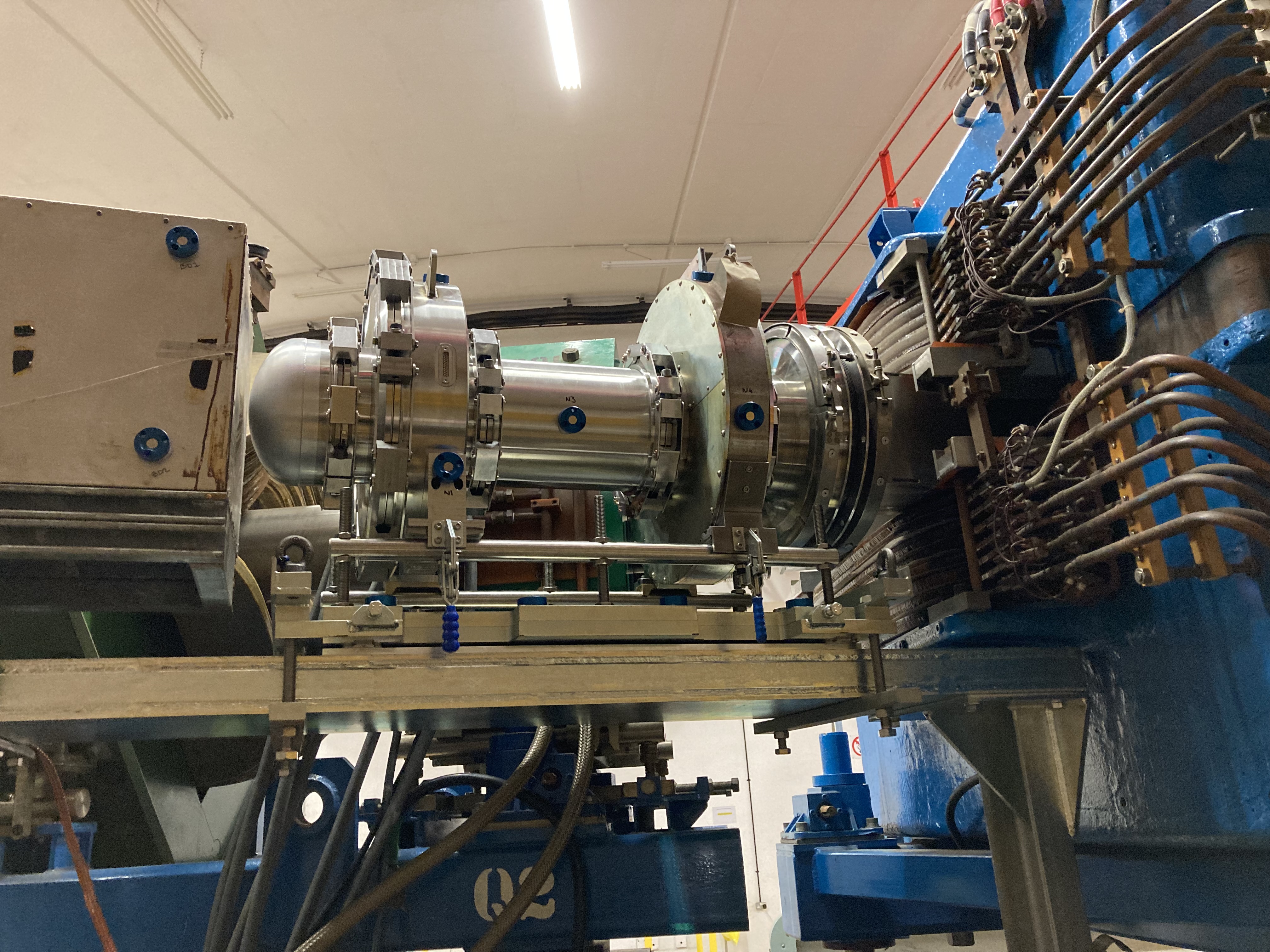
5 November - Hissing Sid the hovercraft
When the dipole magnets in the ISIS synchrotron need to be removed for maintenance, it is not possible to use a crane and so the engineers use a specially designed hovercraft to move them
The dipole magnets that control the direction of the proton beam in the ISIS synchrotron occasionally need to be removed from the synchrotron hall for maintenance. During the current long shutdown, one of these dipole magnets was removed to replace both the coils inside it. The work has now been completed and it's time for it to return to the synchrotron hall.
To move these magnets, which weigh over 30 tonnes, is a challenging task, and one that is not possible using the cranes. The engineers use a hovercraft device that, thanks to its noise levels, is known as 'Hissing Sid'. Using a specially installed shiny floor, they are then able to use the control box to steer the unit using rubber wheels in the air cushion. They can then guide the magnet into the synchrotron hall, where the crane can lift it into place.
1 November 2021
A new interlocks system has been installed in the inner synchrotron that uses light curtains to cordon off areas that have already been searched by the crew.

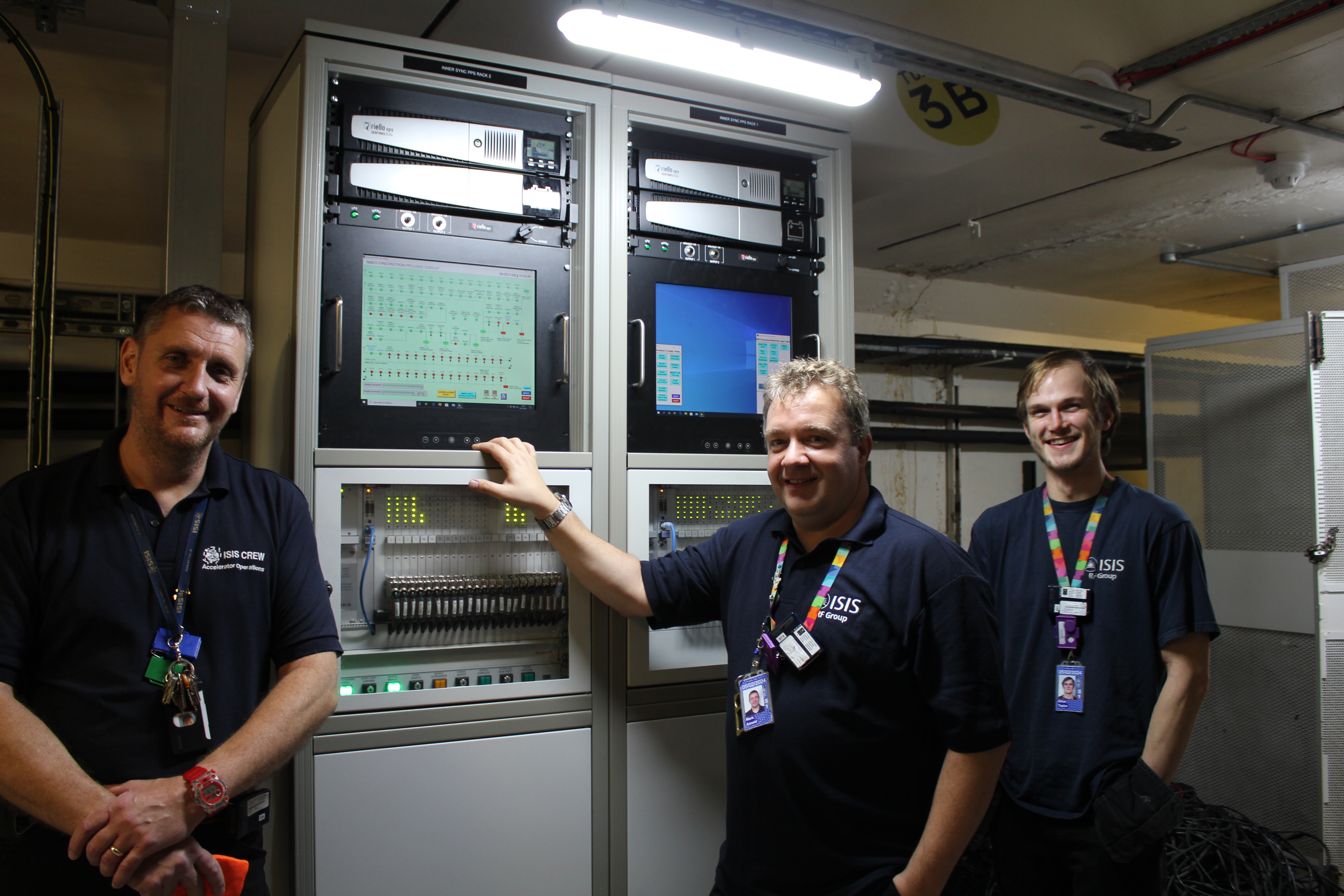
25 October 2021
With the completion of the Tank 4 build, the team are now reinstating the Linac roof shielding. This is the last part of the construction stage and so, when it is complete this will remove the additional restrictions in the area. reverting the building to normal operations.
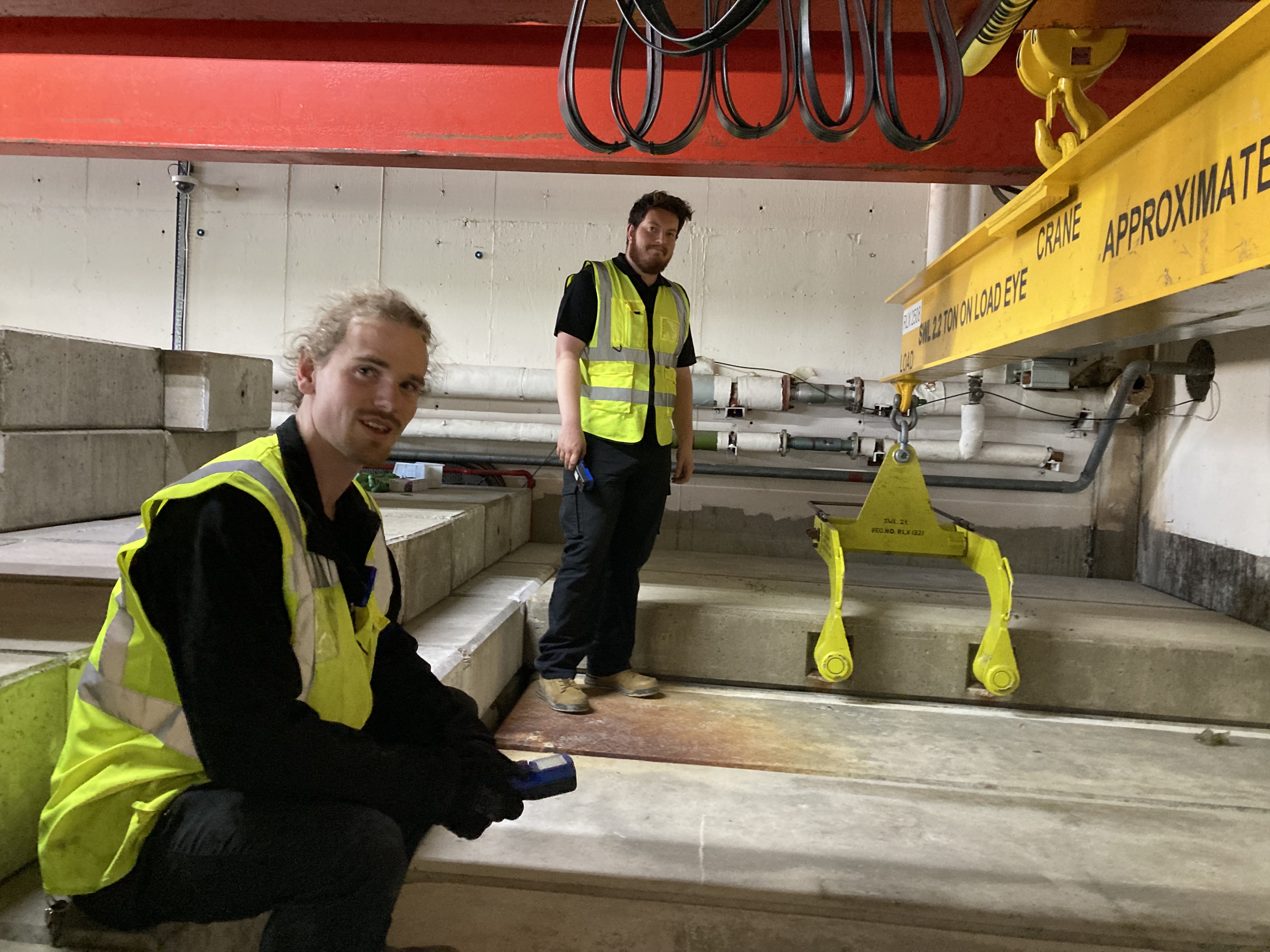
18 October 2021
The magnet that is part of the series that directs the proton beam out of the accelerator is now back in the ring and under vacuum.
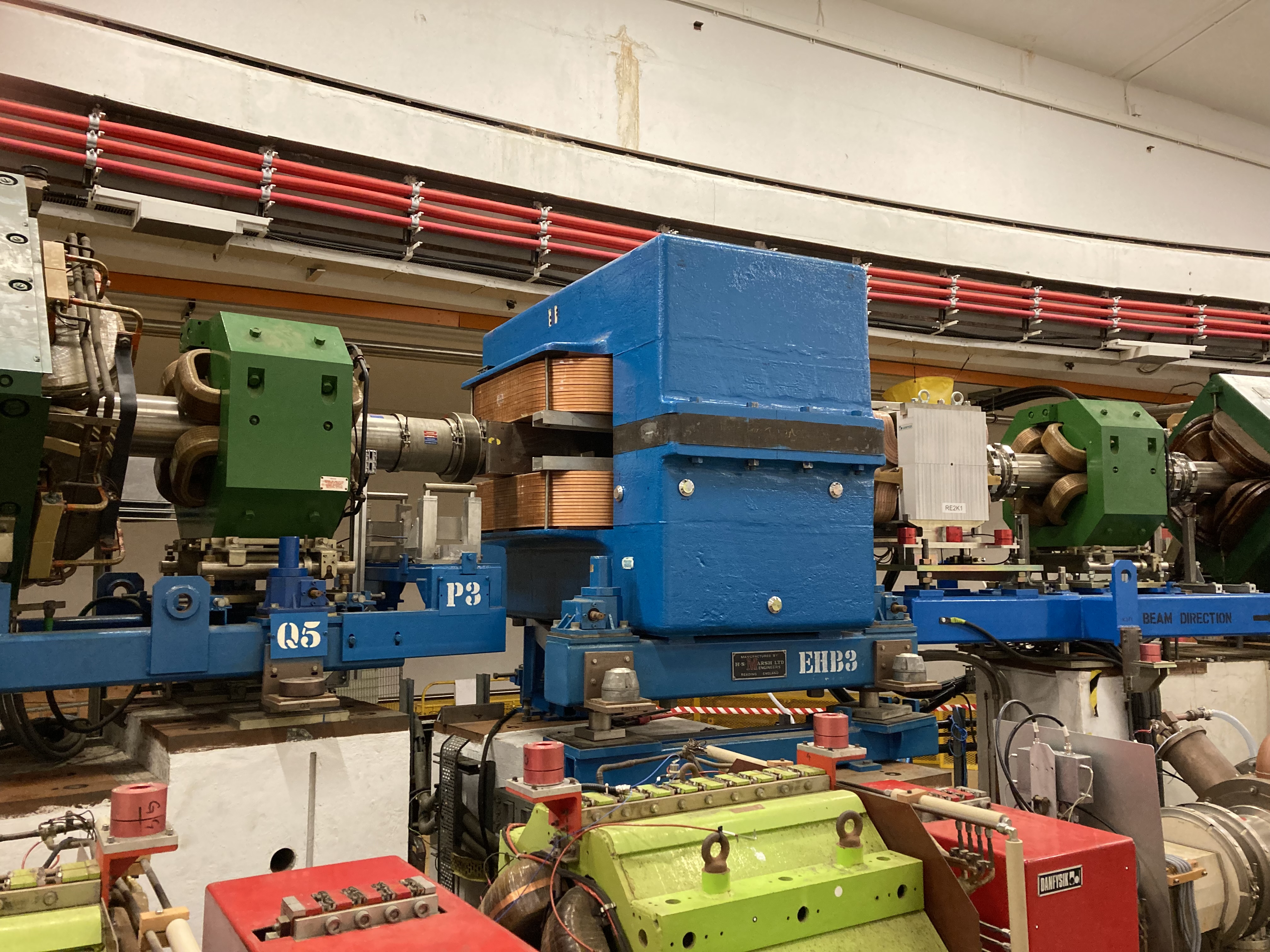
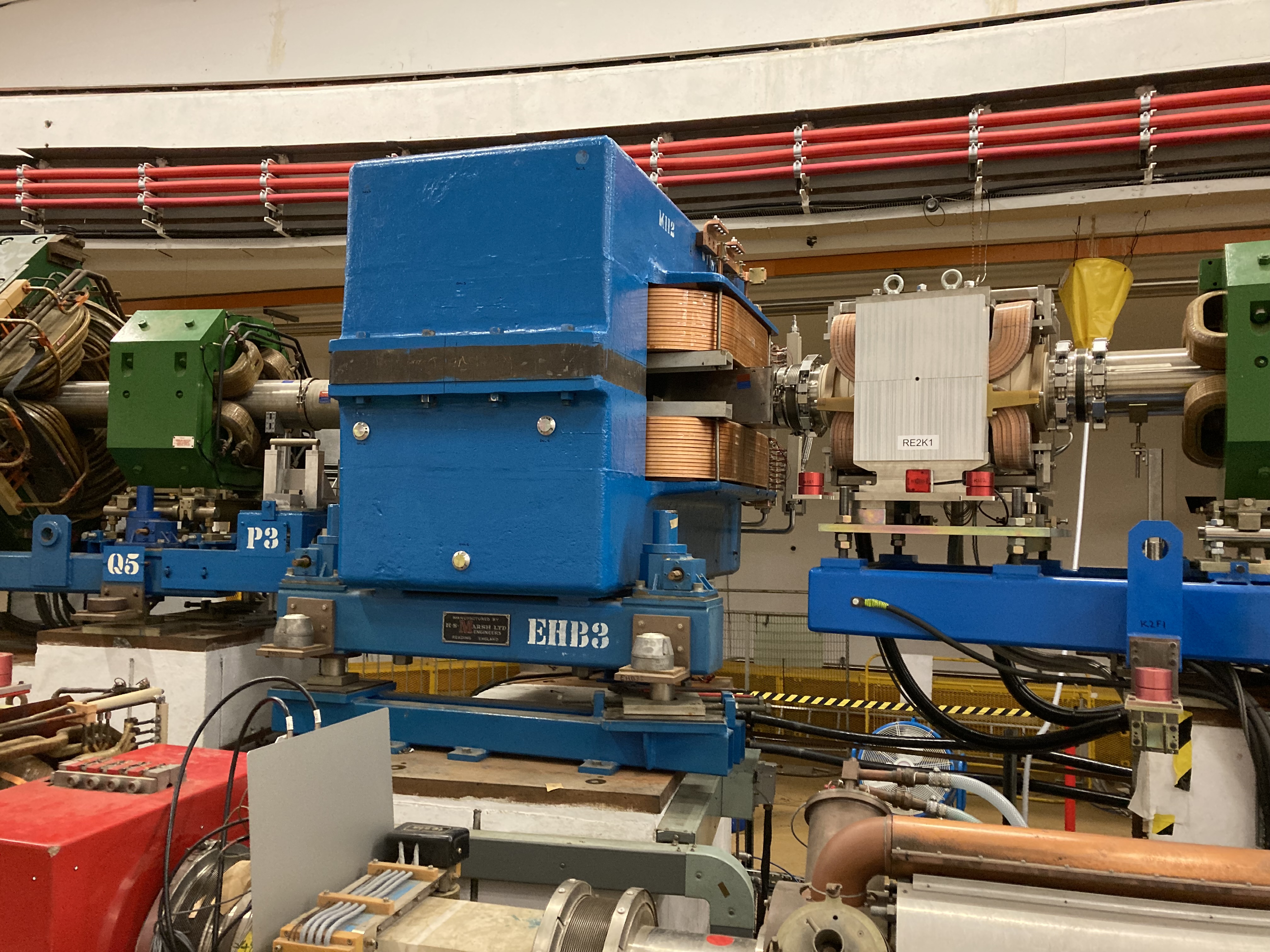
4 October 2021
The images below show the services trolley in TS1, and how much it has been stripped back so far as part of the TS1 project. There is still several weeks of work until this stage is complete. Spot the difference!!
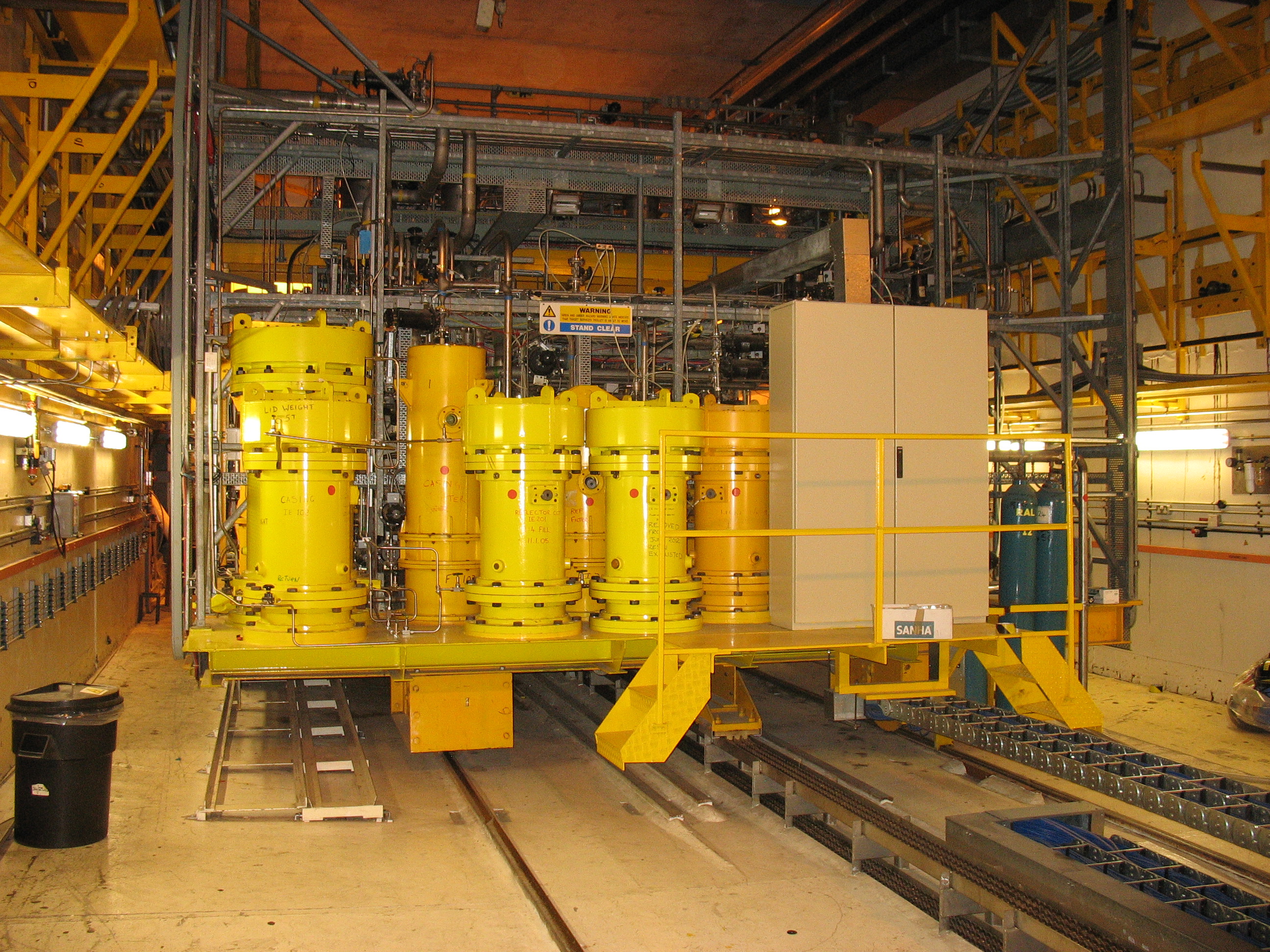

22 September 2021 - extracted proton beam
The mechanical work on one of the magnets that directs the proton beam out of the accelerator is complete (image, left); the next stage will be electrical testing when the magnet is in position. A mock up of the new collimator in the EPB has been constructed (image, right), to allow the team to ensure all components fit correctly and provide operational experience for team members.
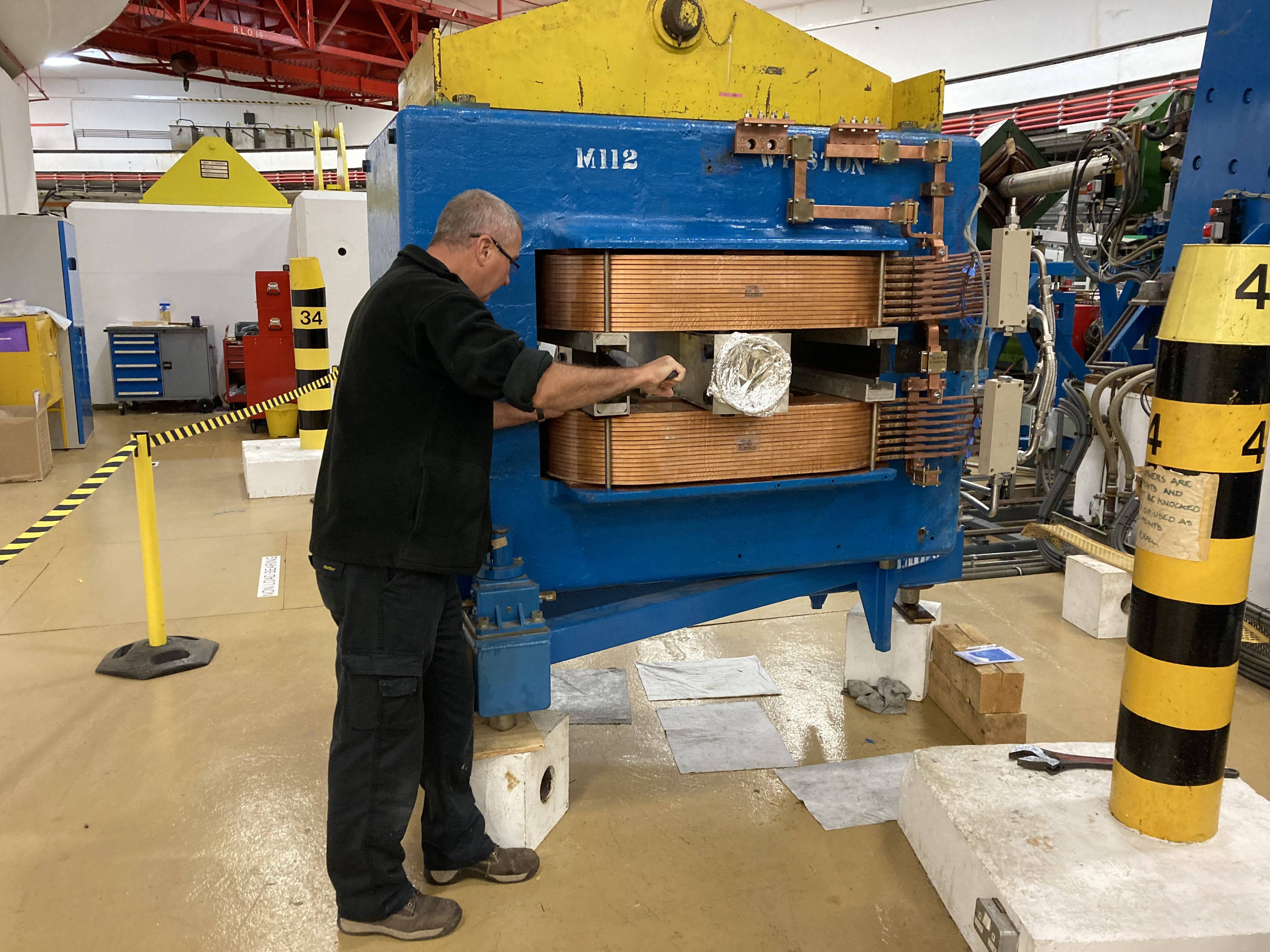
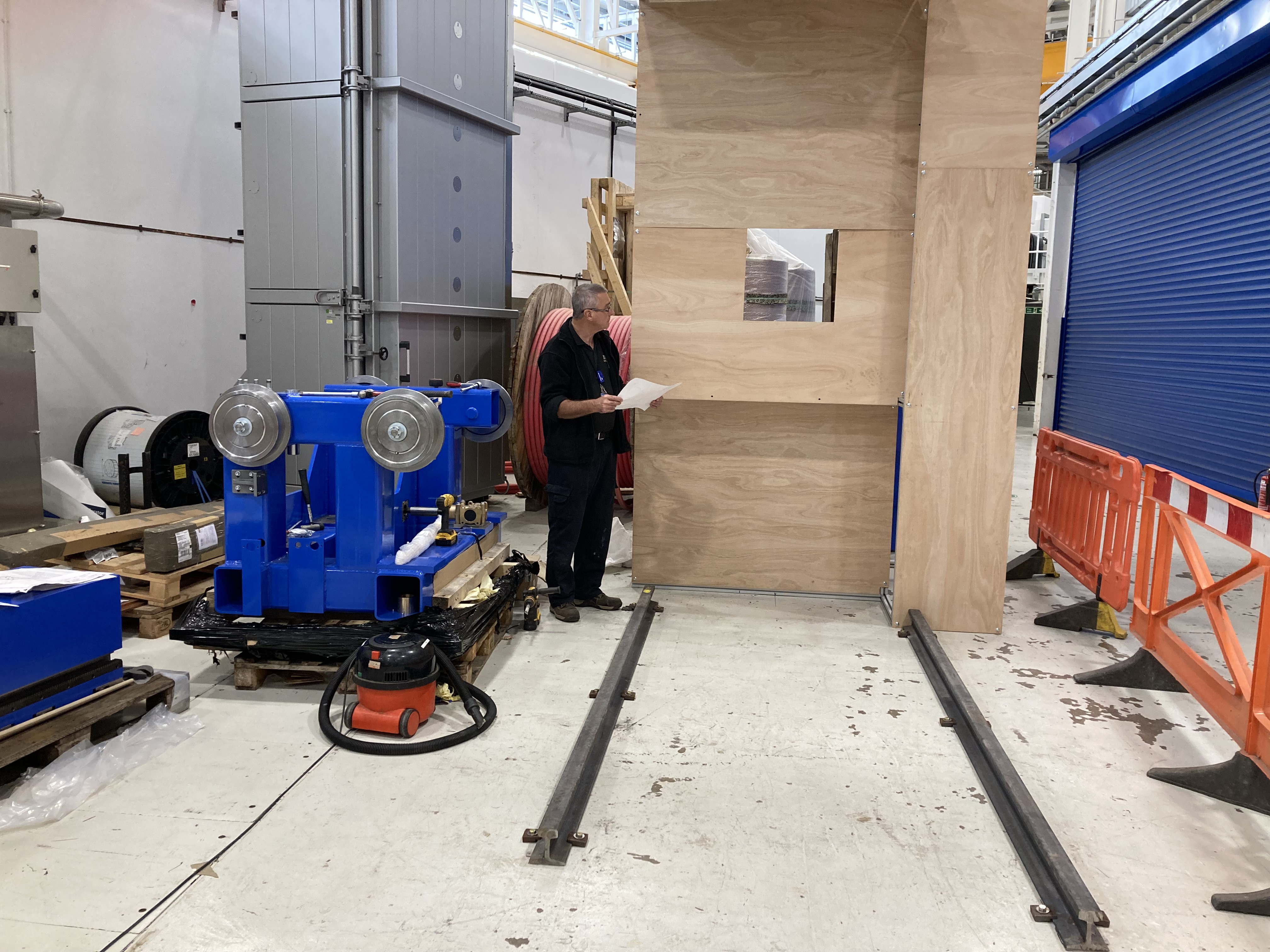
22 September 2021 - Tank IV testing
The team have started the bead pull testing on the new linac tank IV. To find out more about this test, and how you can use a bead to replicate a beam, read our article on the testing they did before moving the tank.
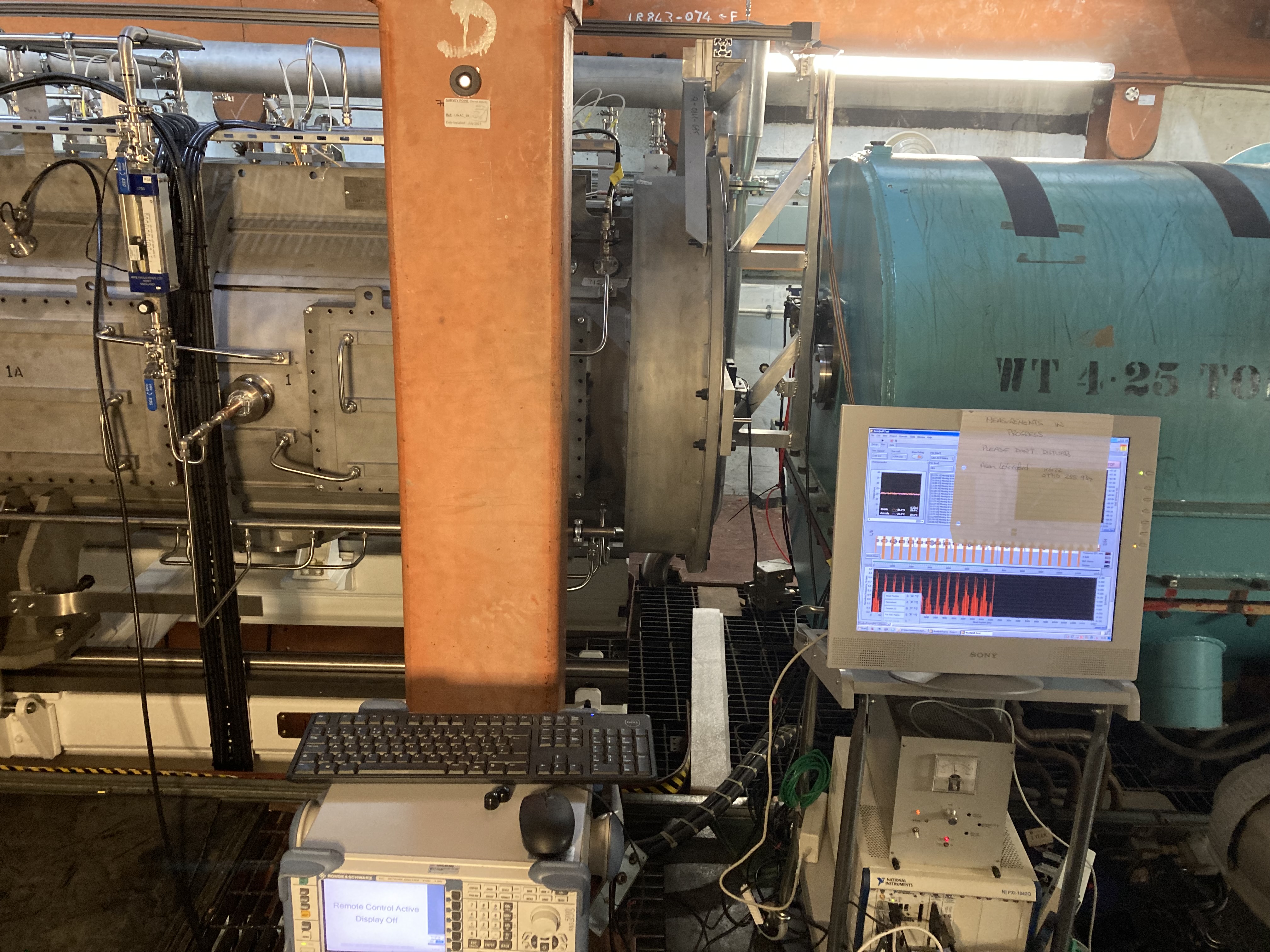
Ion source project, September 2021
As well as the major ongoing shutdown work on linac Tank 4 and TS1, significant preparatory work is happening behind the scenes for some projects due for installation in the next shutdown. One such project is the linac pre-injector upgrade. This is the section at the very start of the ISIS accelerator; when installed, it will bring big efficiency and performance improvements. A cutting-edge component of the pre-injector is the RF ion source, where the ion beam begins. The plasma inside the ion source was first switched on in April 2021 but only at low repetition rate, so the plasma appeared to flash on and off. In the months since, a technically-challenging cooling system involving 3D printed parts has been under test, with iteration toward a robust solution. Last week, the RF ion source achieved the milestone of operating at full repetition rate of 50 Hz whilst at full power. It is now flashing so fast that it appears by eye to be on constantly (see the red glow in image below)! This achievement is significant because it demonstrates that the novel cooling system can remove the heat equivalent to a kitchen kettle from the volume of a drinks can. The next milestone of extracting an ion beam from the plasma is due around the new year. After that, long-term running will commence to prove the system is stable for eventual installation on ISIS. Congratulations to the Low Energy Beams Group on this achievement! For more information on the ion source project, watch Scott's introductory video.
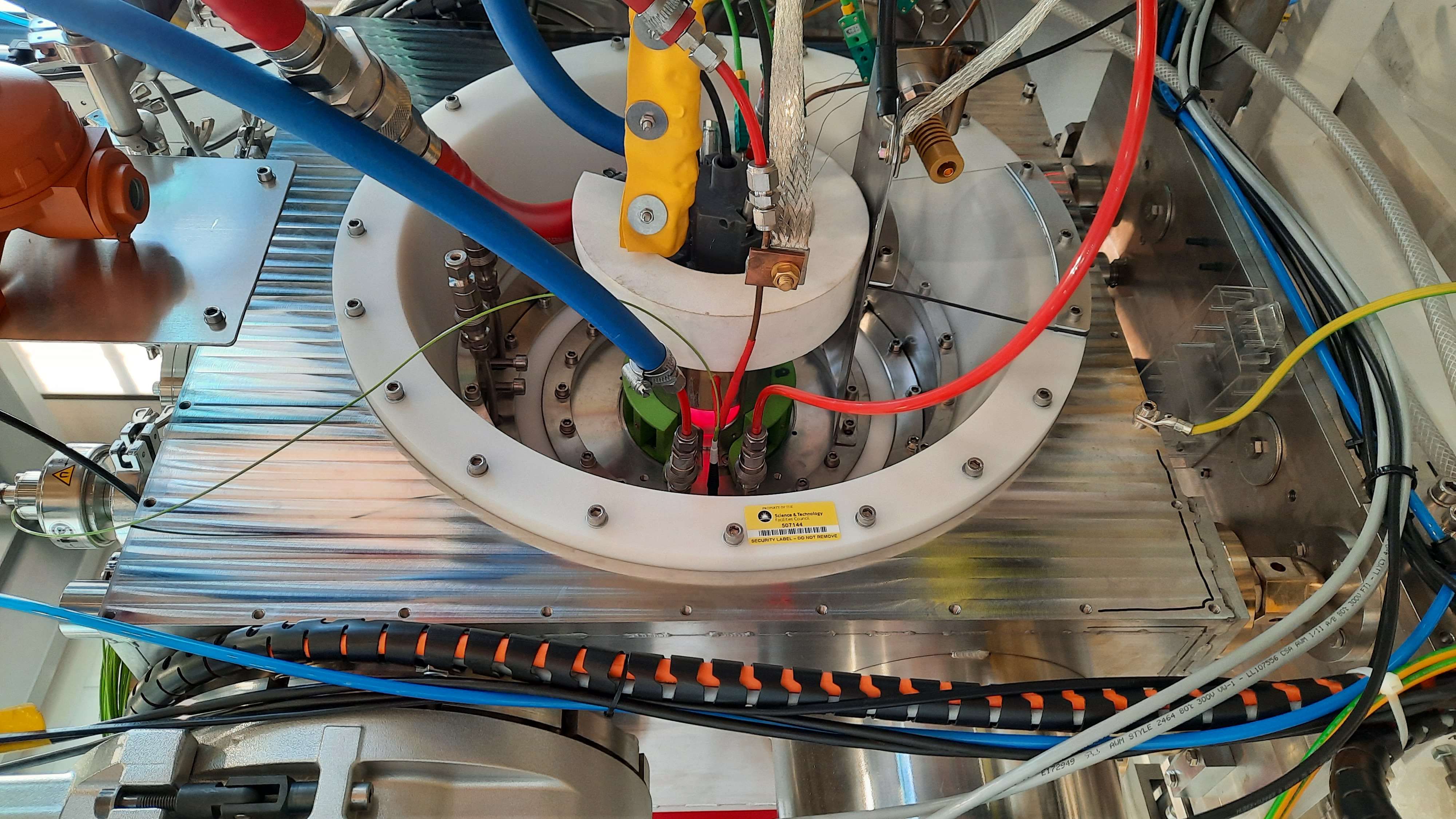
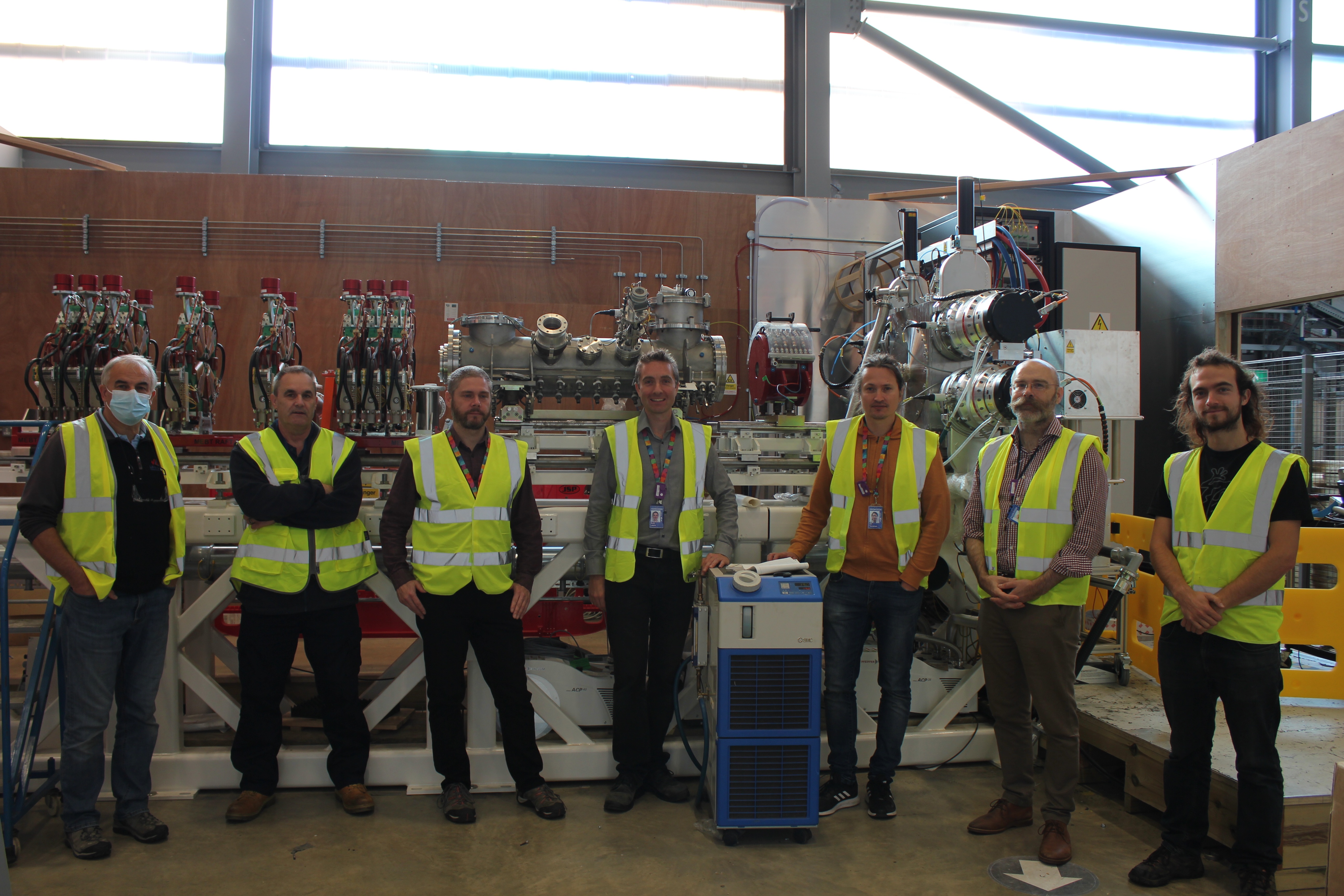
15 September 2021
As well as the TS1 and Tank IV projects, there are also a series of instrument upgrades taking place across the two target stations. The upgrades vary from the introduction of a flight tube under vacuum for Alfred, a new chopper for Sandals, a new chopper for LET and a new intermediate shutter for ChipIr that is being machined from steel removed from a previous beamline, Carmen.
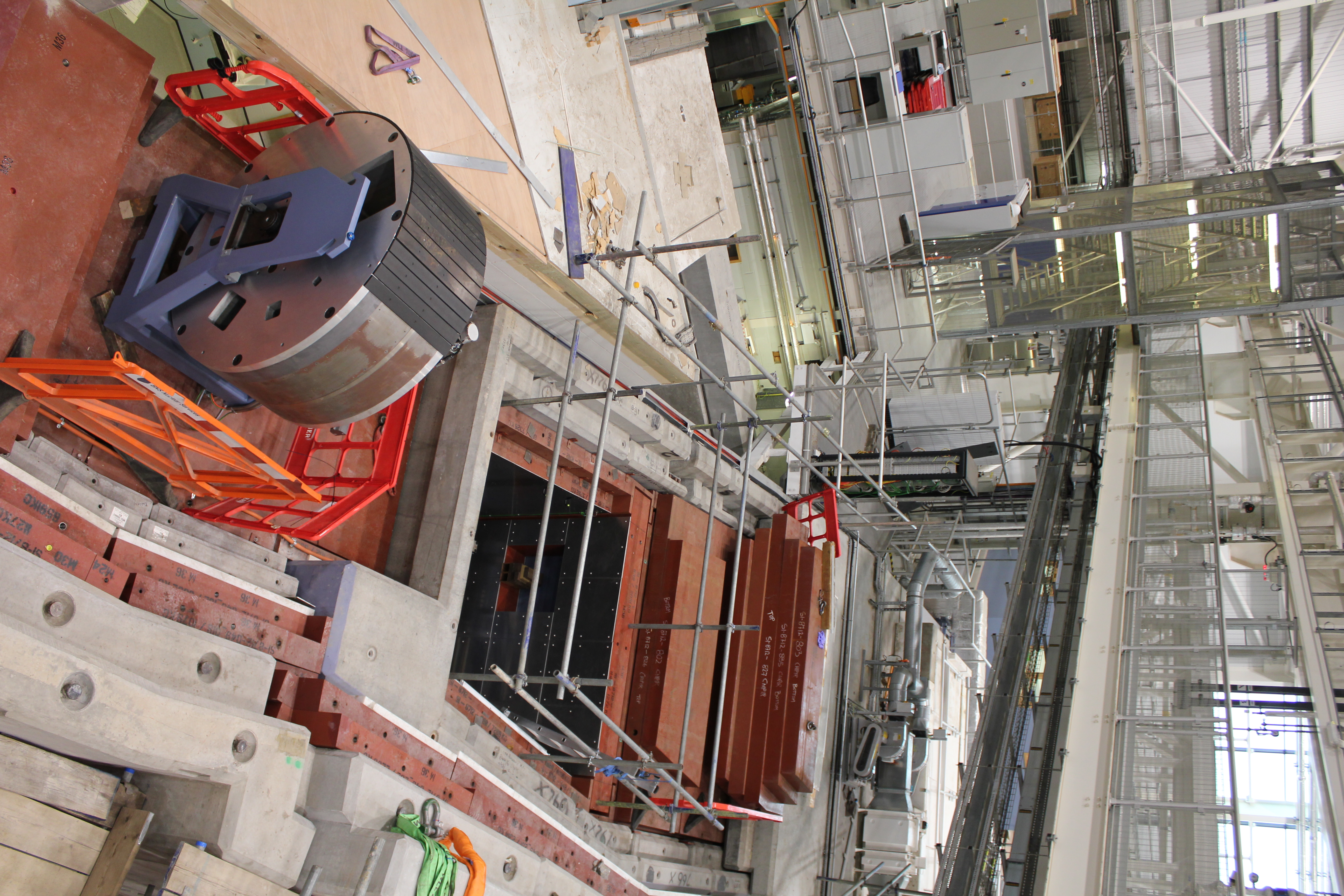

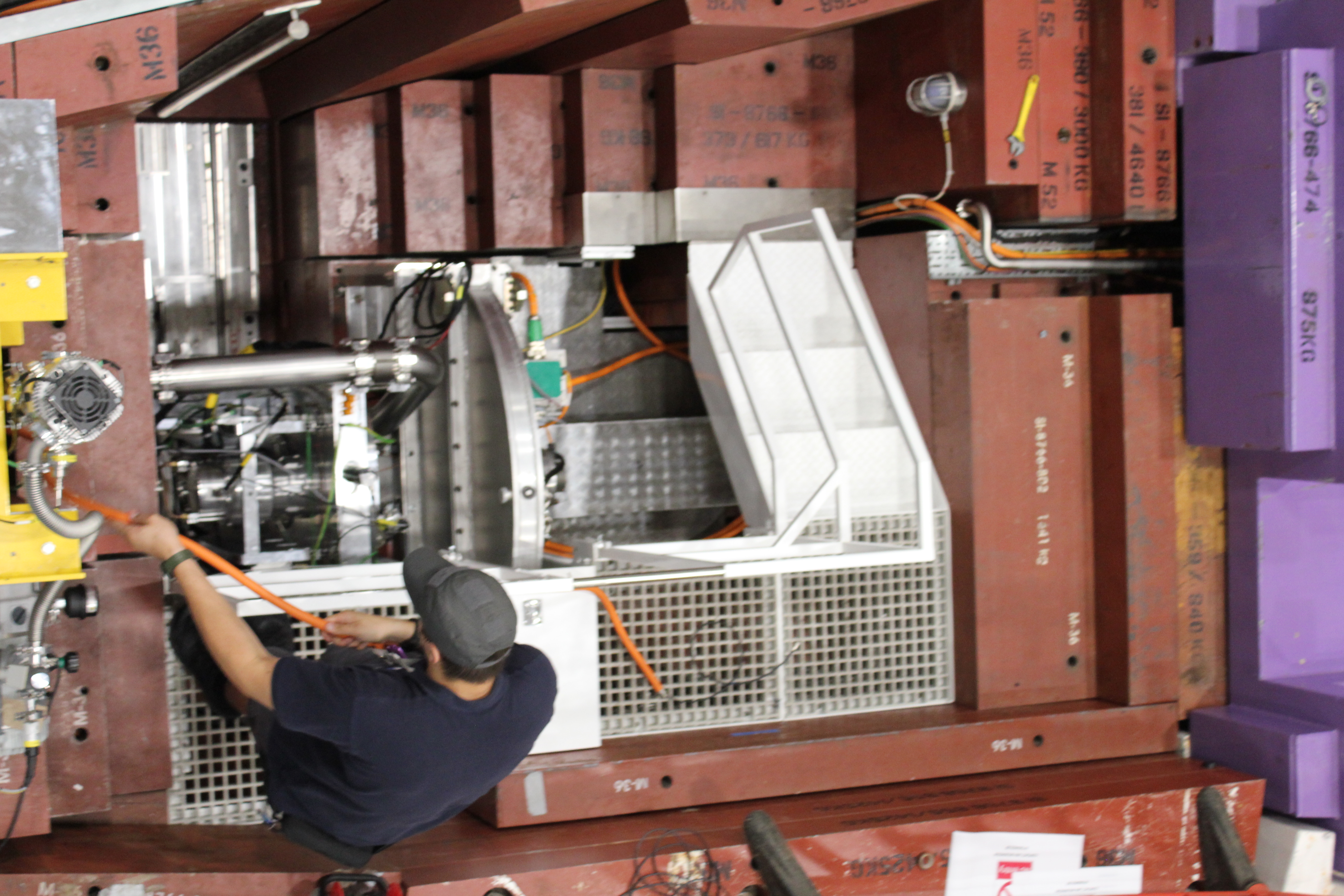

10 September 2021
The six joints of the new tank IV have been vacuum leak tested and minor position adjustments of the drift tubes are now being conducted to account for any shifts that happened during transport.
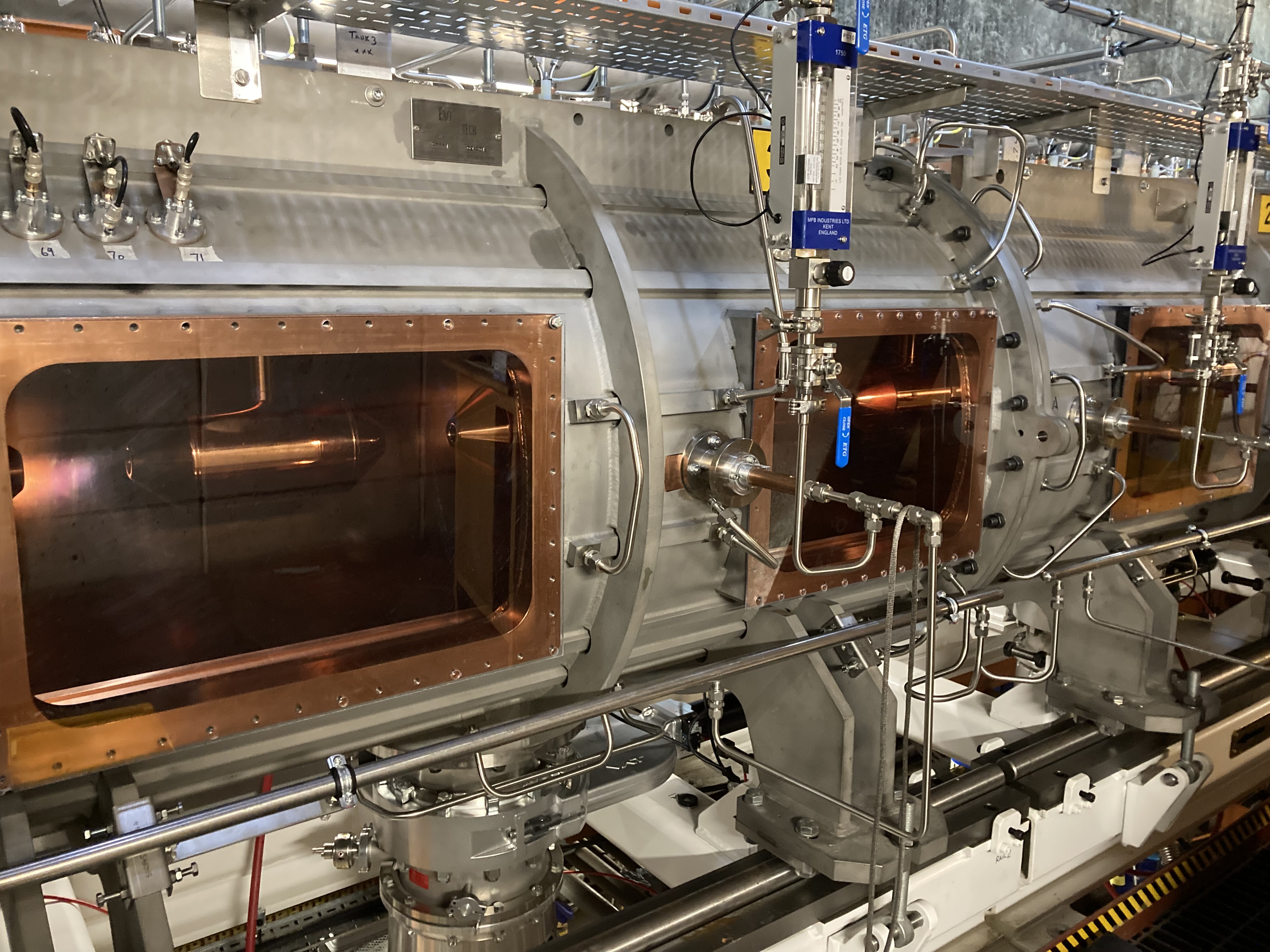
8 September 2021
As part of the TS1 project, the remote handling arms that are being used for the dissembly of the target services area, and removal of the reflectors, have themselves been repaired and replaced where neccessary.
.jpg)
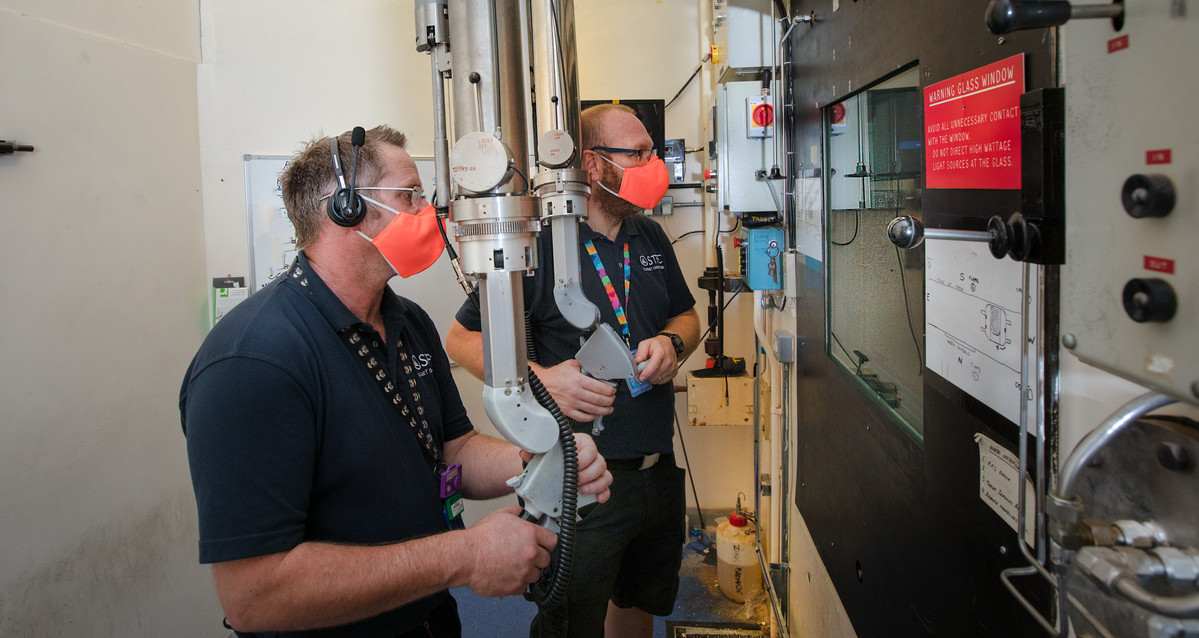
27 August 2021
The TS1 project team have been adding covering plates to the parts that will make up the new beryllium reflector. These parts will assemble around the target like a 3D jigsaw. The
plates are made from ‘boral’, a mix of aluminium and boron, with the boron being there as a
neutron absorber. The plates are added to reduce the background signal of neutrons outside of the main pulse.
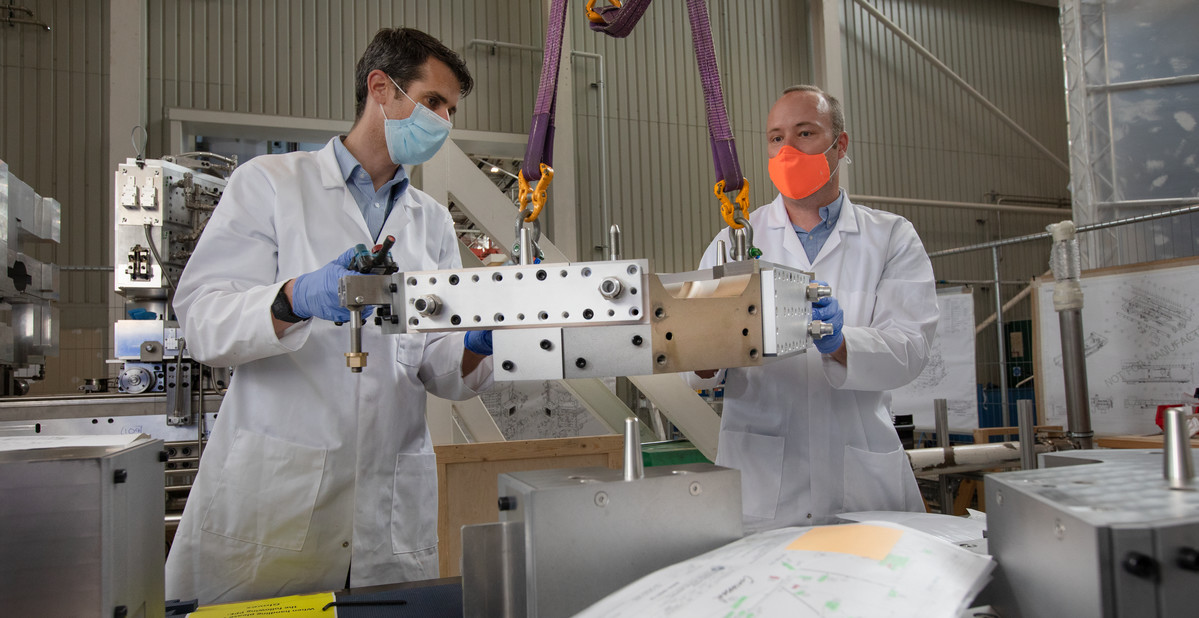
.jpg)
24 August 2021
The cryogenics team have been busy repairing the large dilution fridge, which was distorted during high magnetic field testing.The images below show Alex and Ross soldering the pipes and then leak testing them.
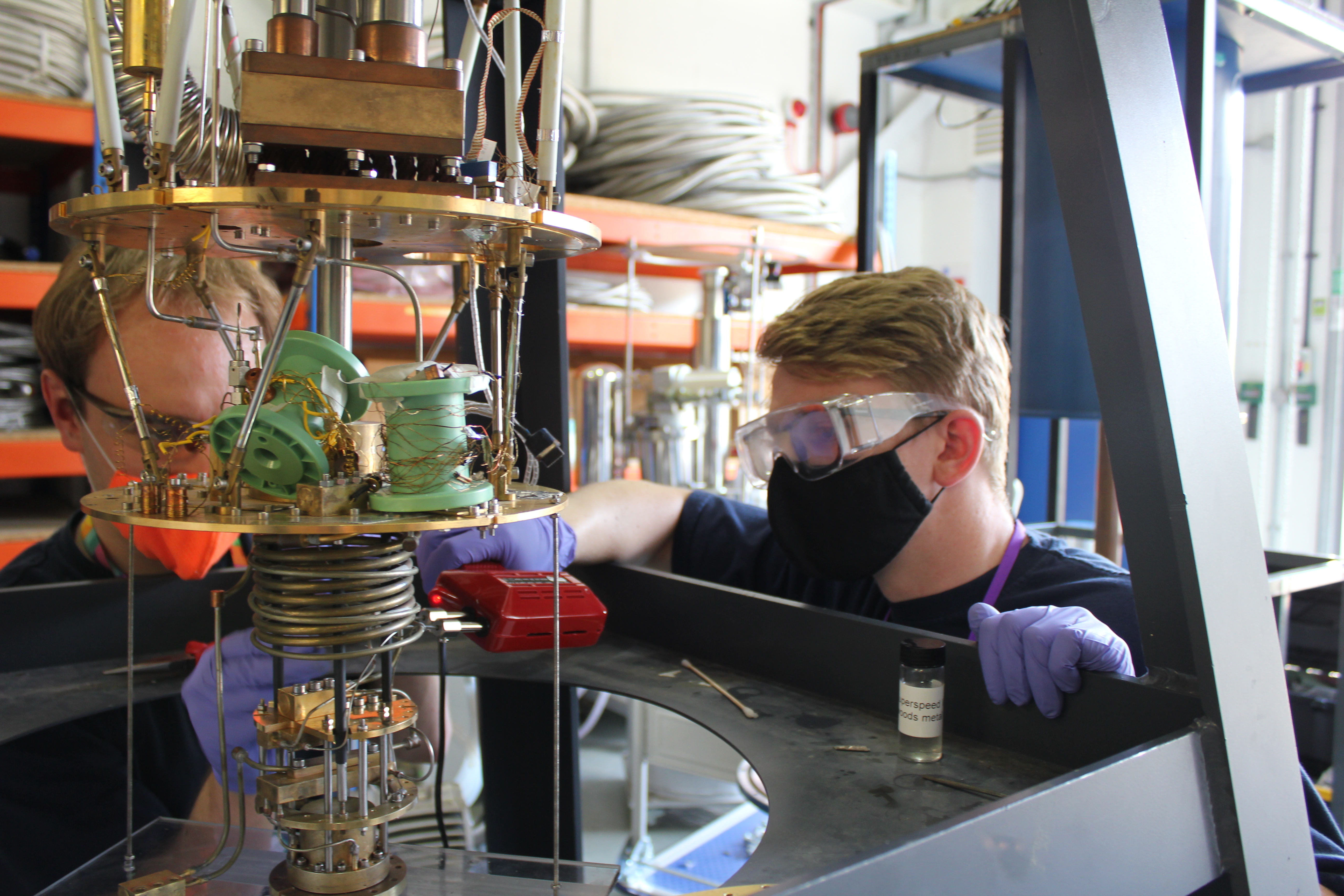
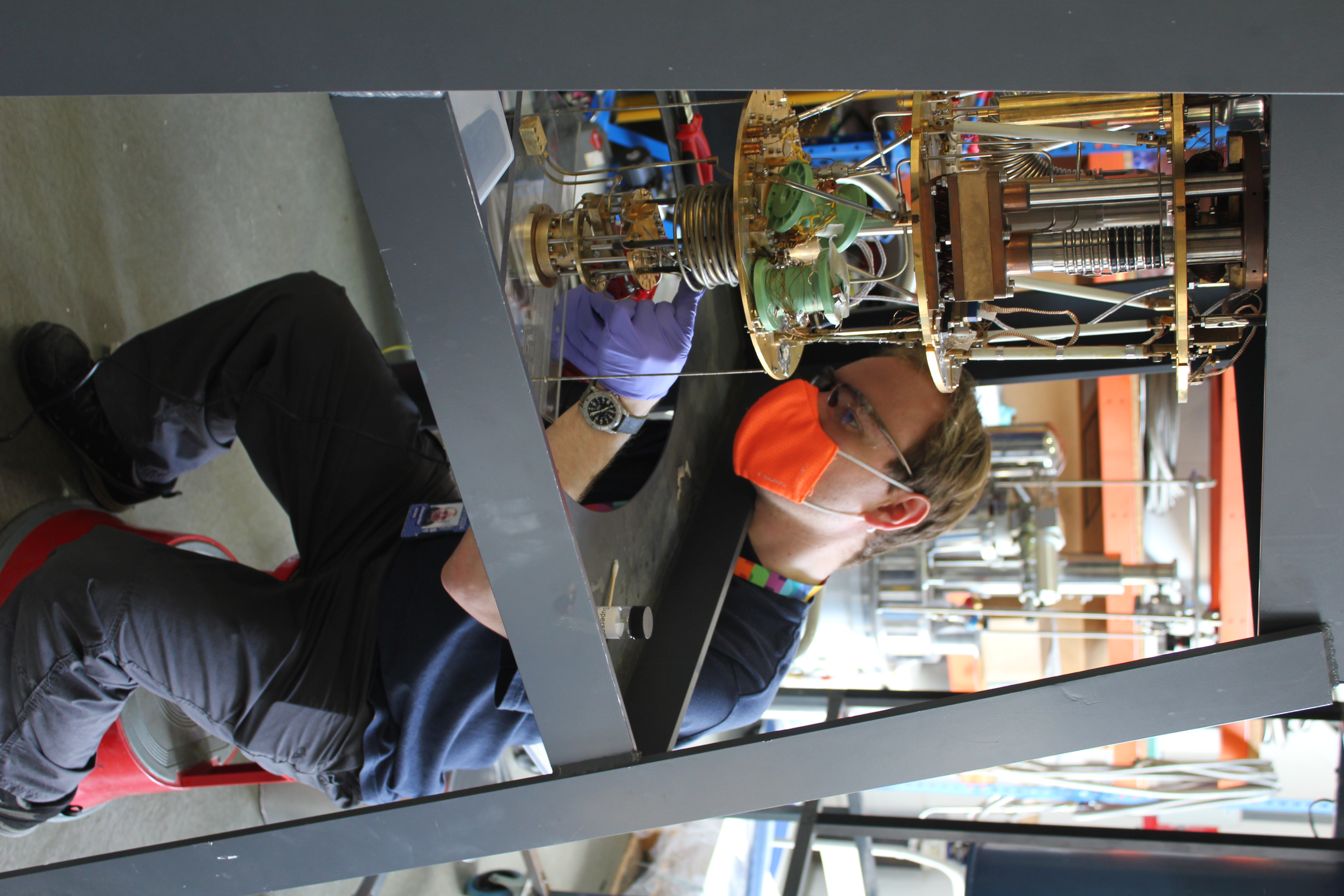
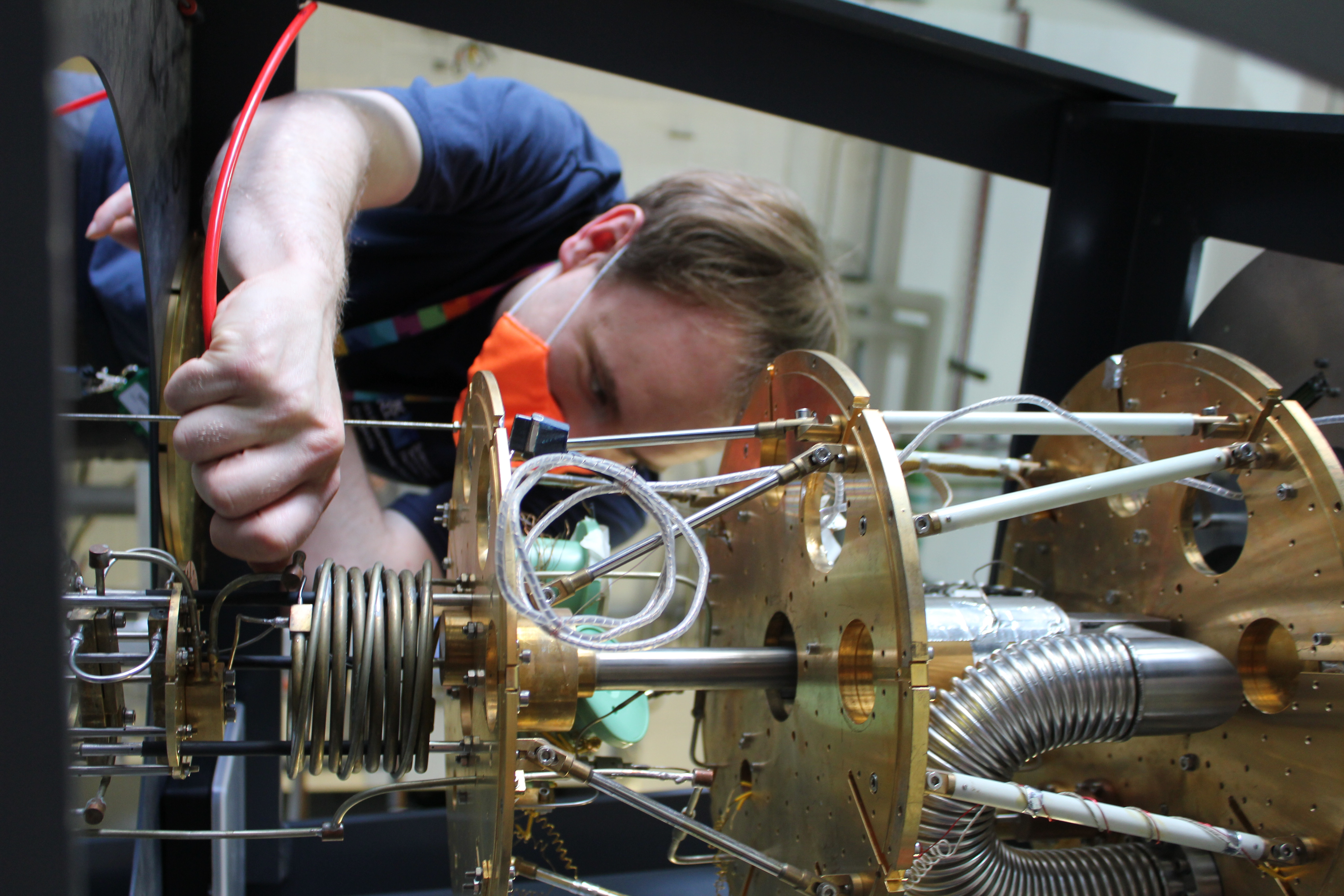
18 August 2021
The old target was removed from TS1 after being packaged into a shielded flask. The video below shows how it was removed from the building, despite being too big to be lifted over the target assembly area.
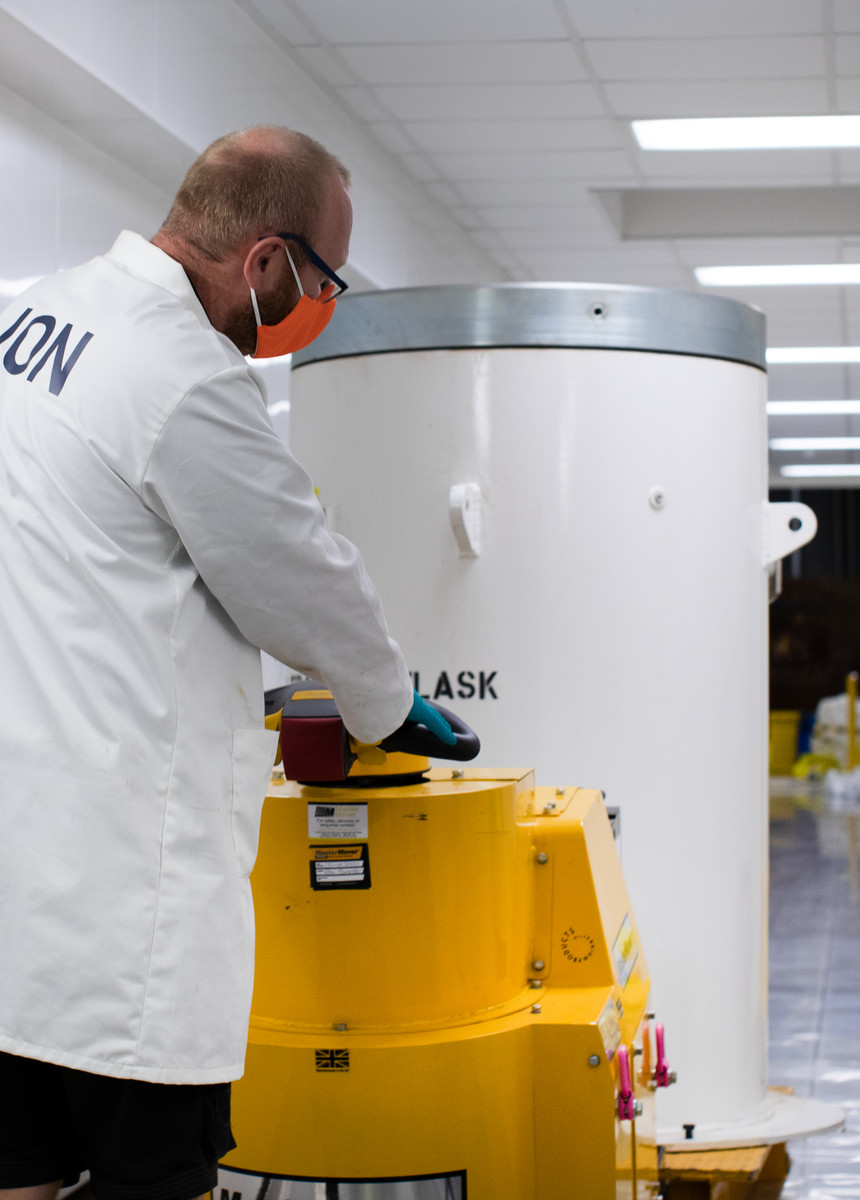
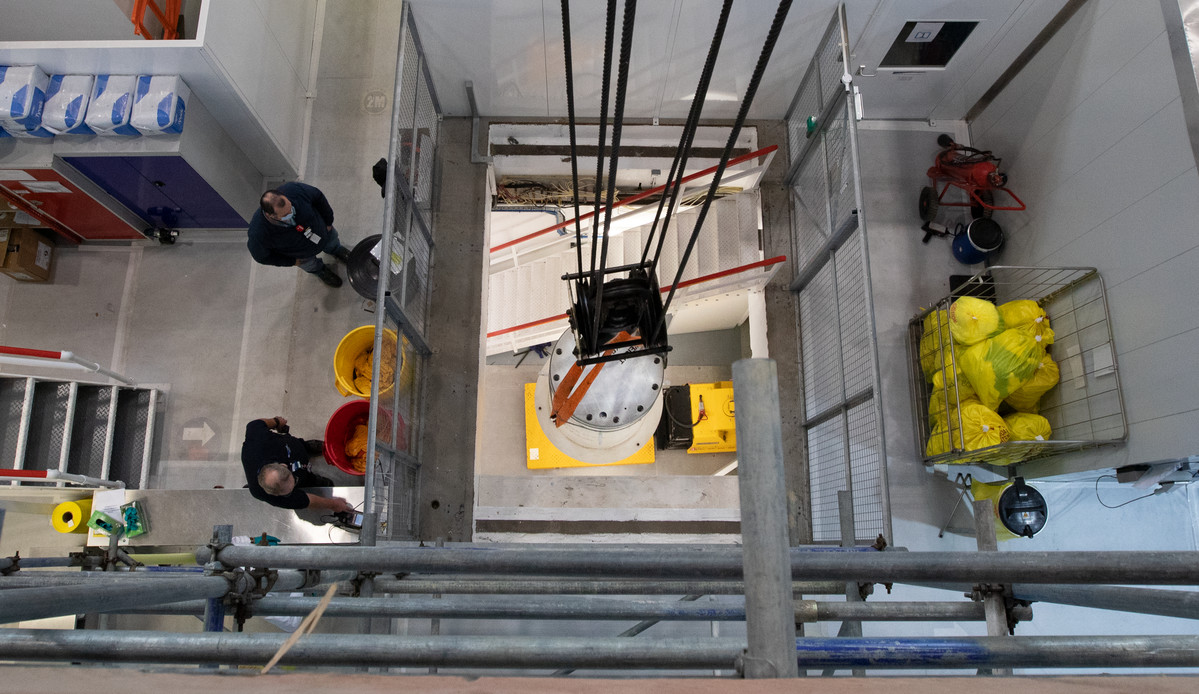
17 August 2021
A new 33T Dipole magent has been installed, and new coils put into one of the 18T Extraction Horizontal Bender magnets.
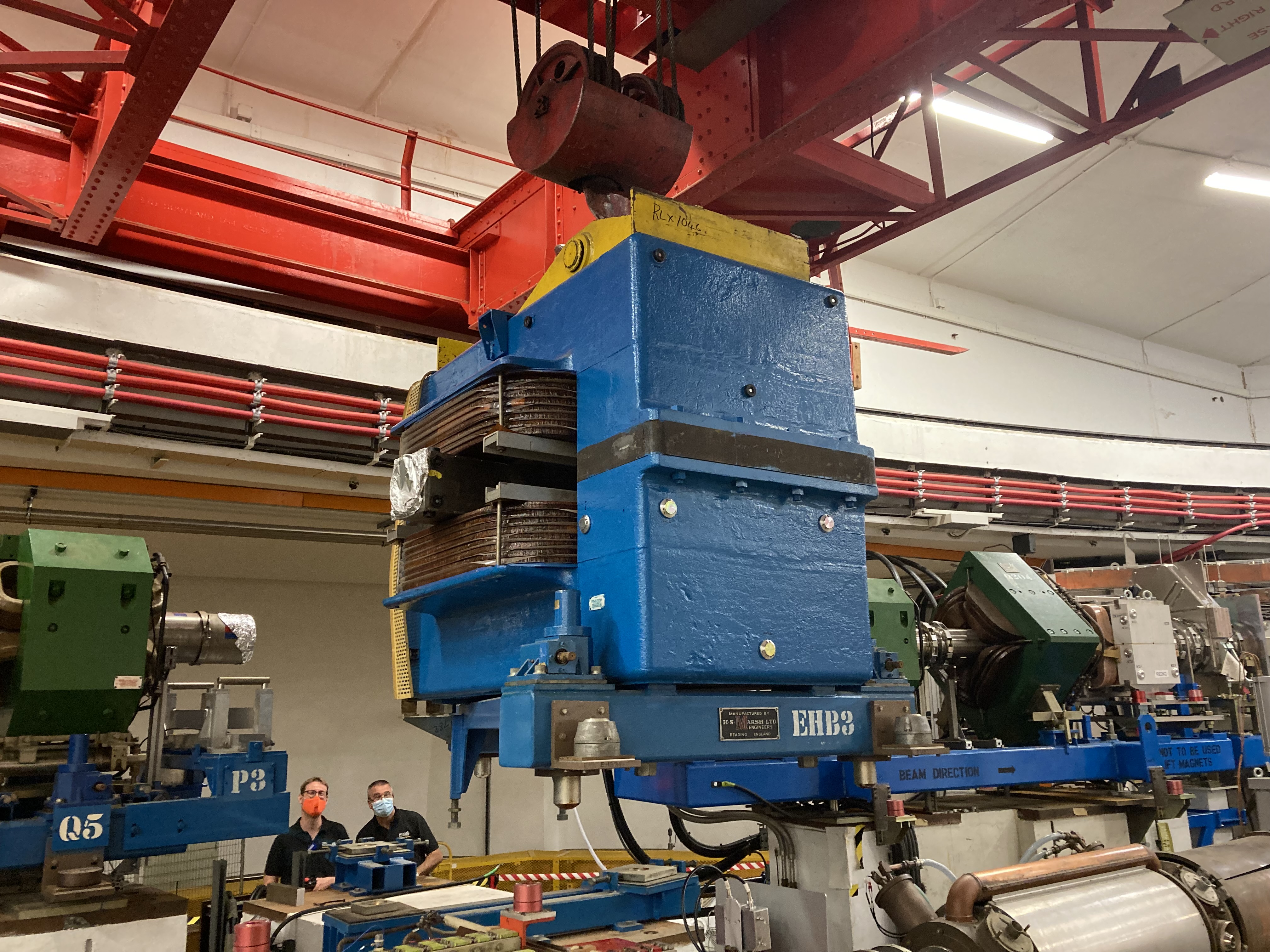
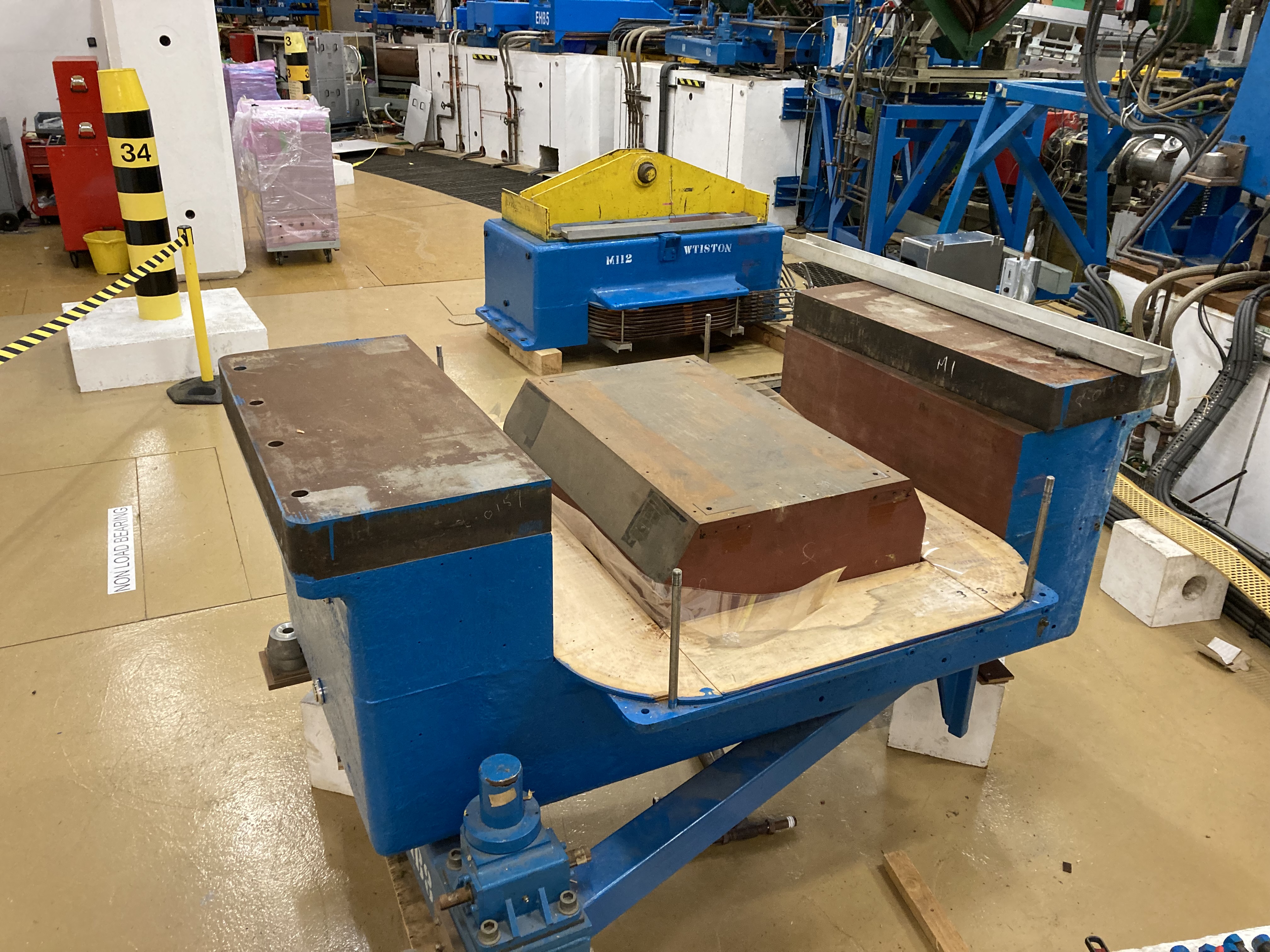
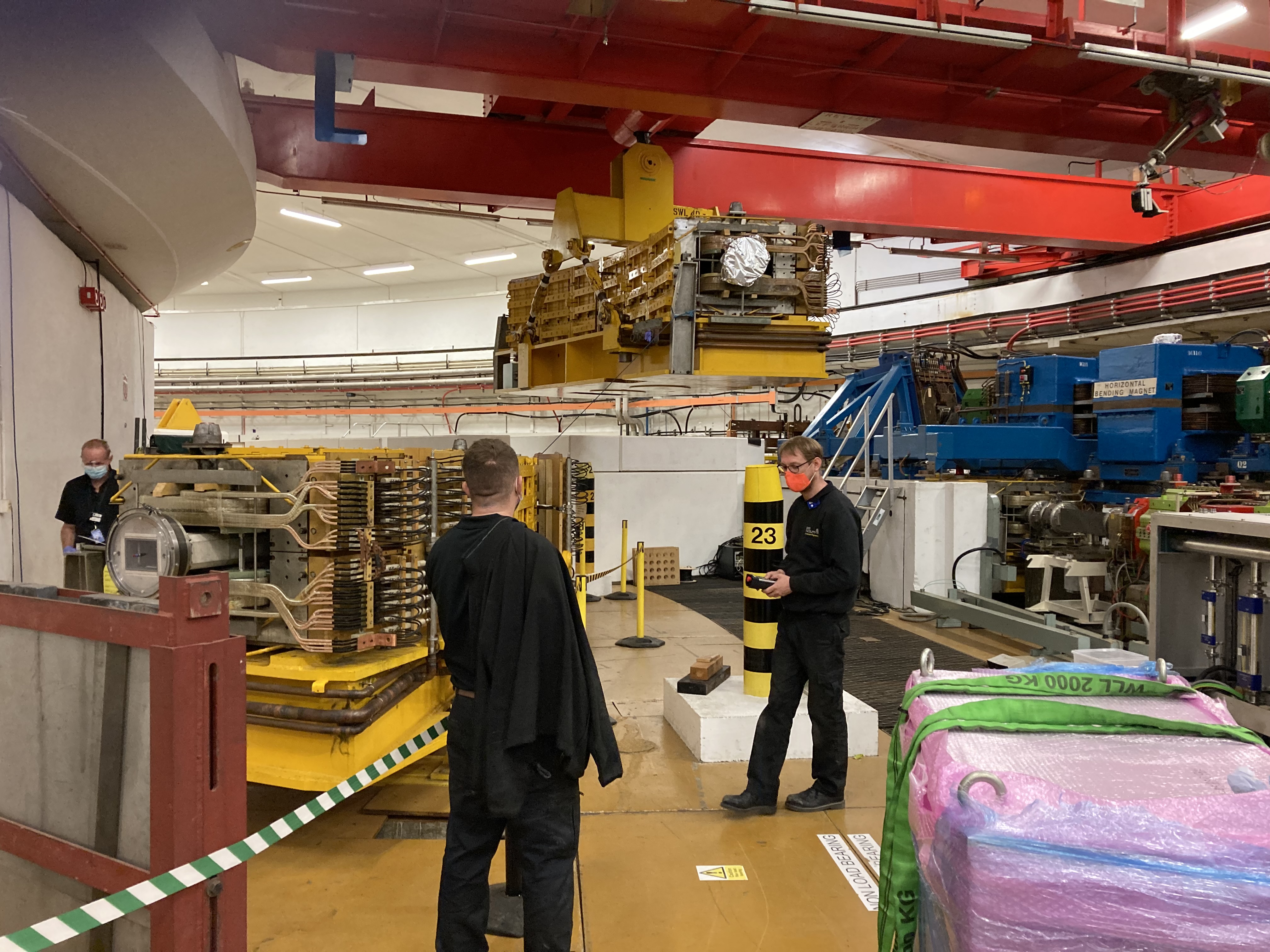
11 August 2021
The new tank IV sections have been lifted into place!
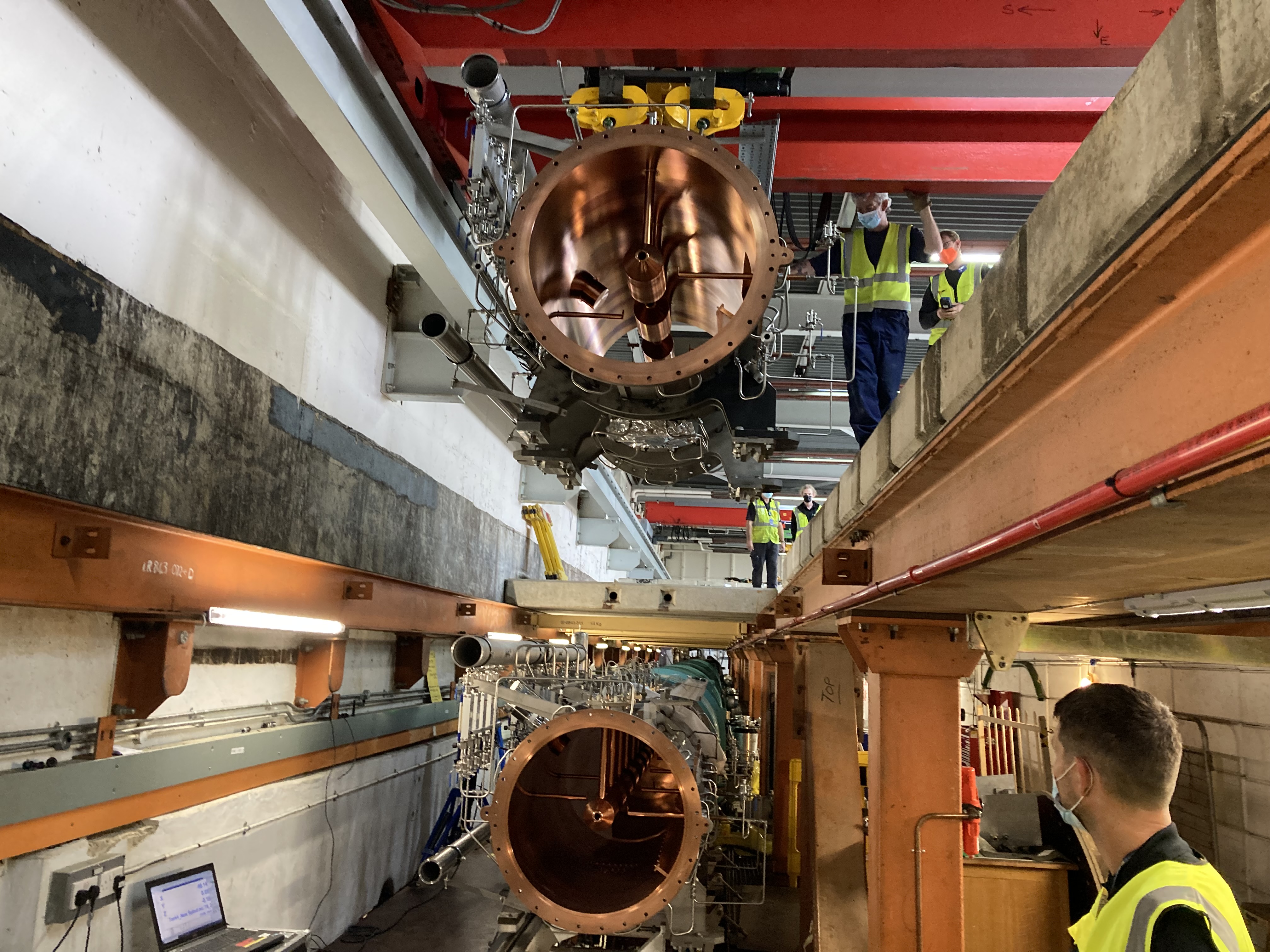
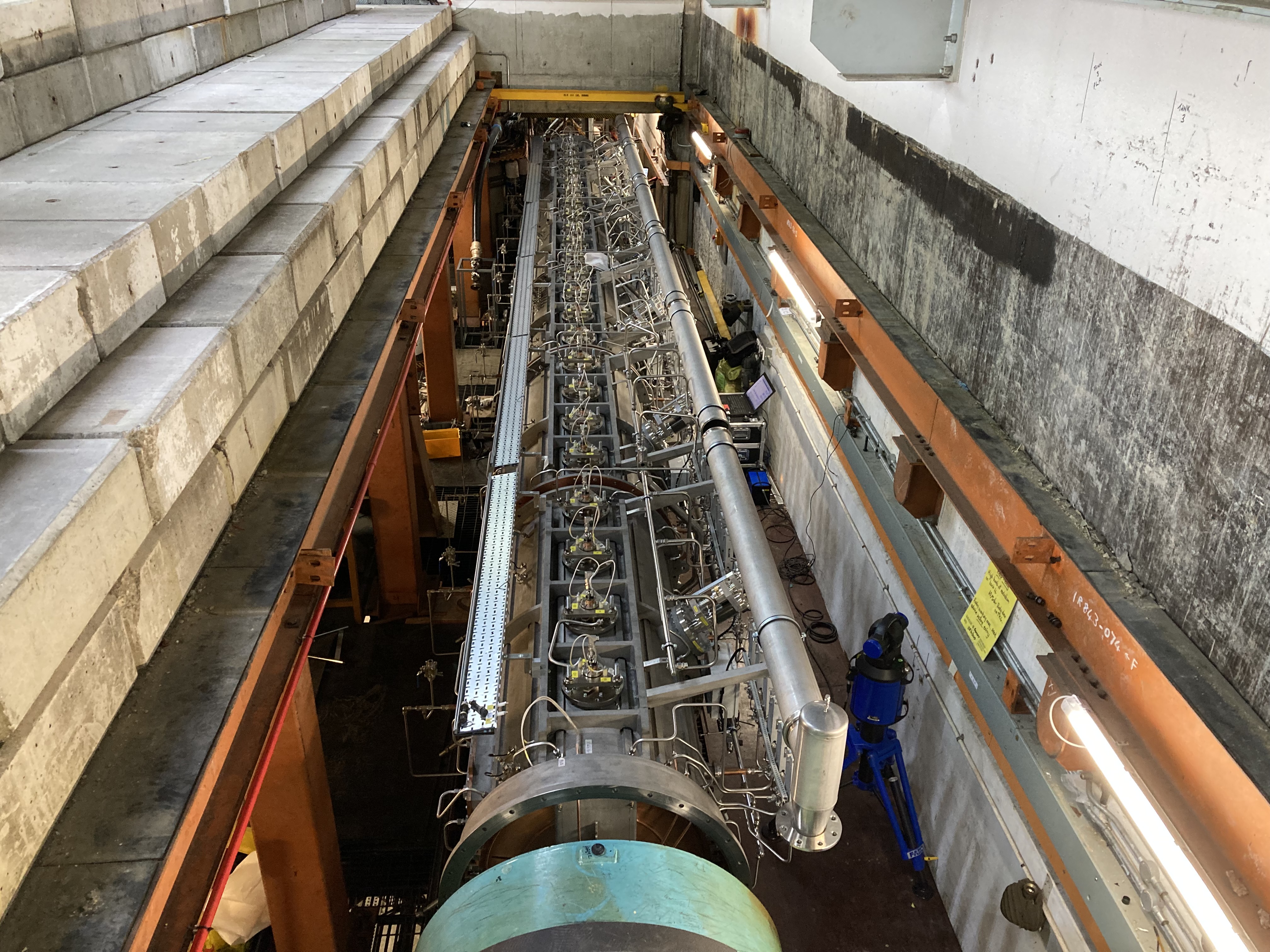
4 August 2021
Work
continues to progress stripping out the target services trolley, with the last
few remaining higher-radioactive dose items scheduled to be removed shortly. We
are still working to resolve an issue with the service trolley’s movement, with
the external company brought in to look at the drive-system due back to site
next week to assist in fitting some upgraded parts. Progress with the remote
handling work on the old TRAM has been impacted by additional work being
required on TS2. This additional work was only discovered at the end of the
last run so was not factored into the original TS1 planning. This work is
needed to ensure TS2 is ready to take beam as part of commissioning the new
tank IV.
21 July 2021
With the old tank removed, installation of the new tank has begun, starting with the rails that will support it.
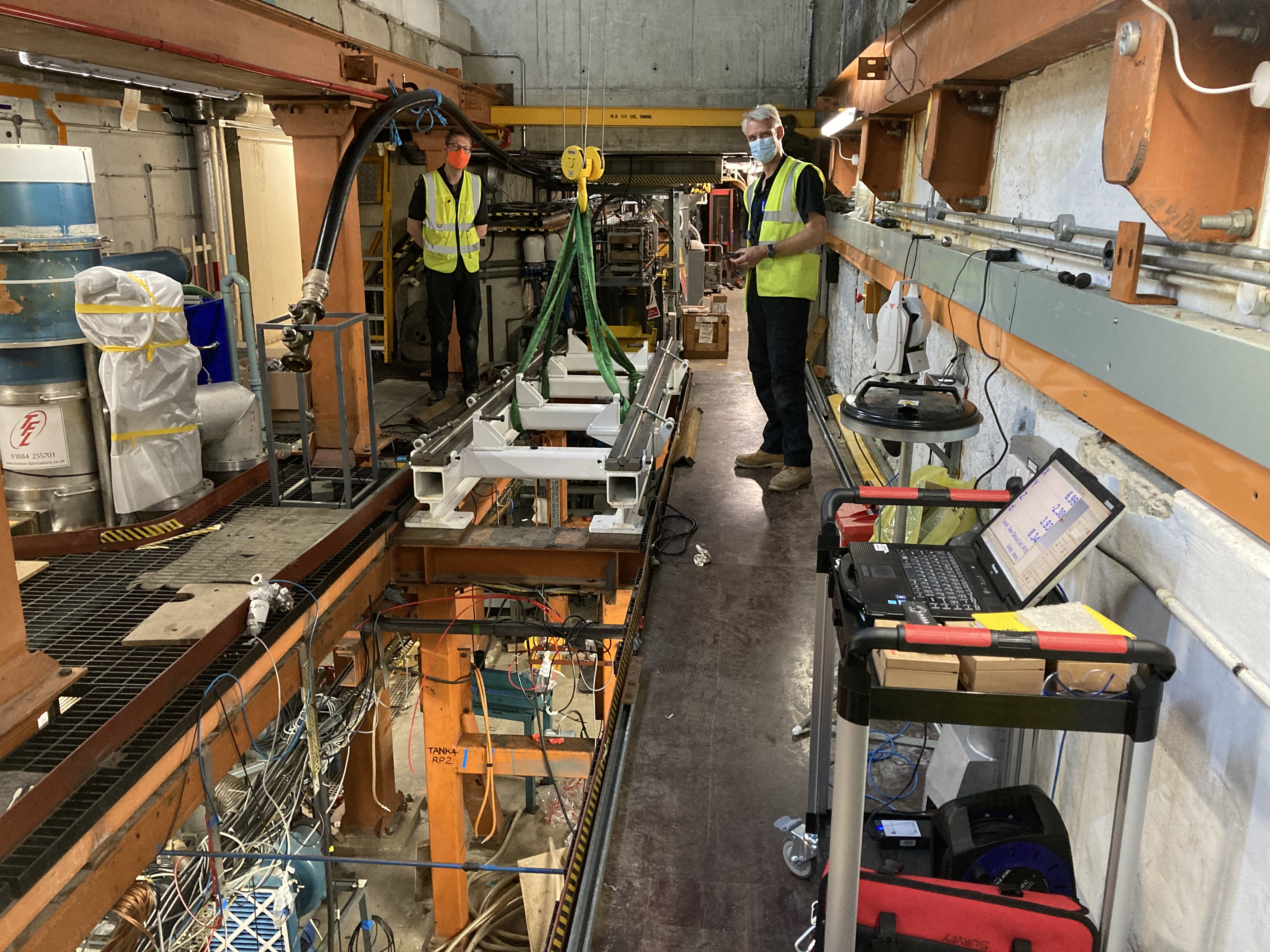
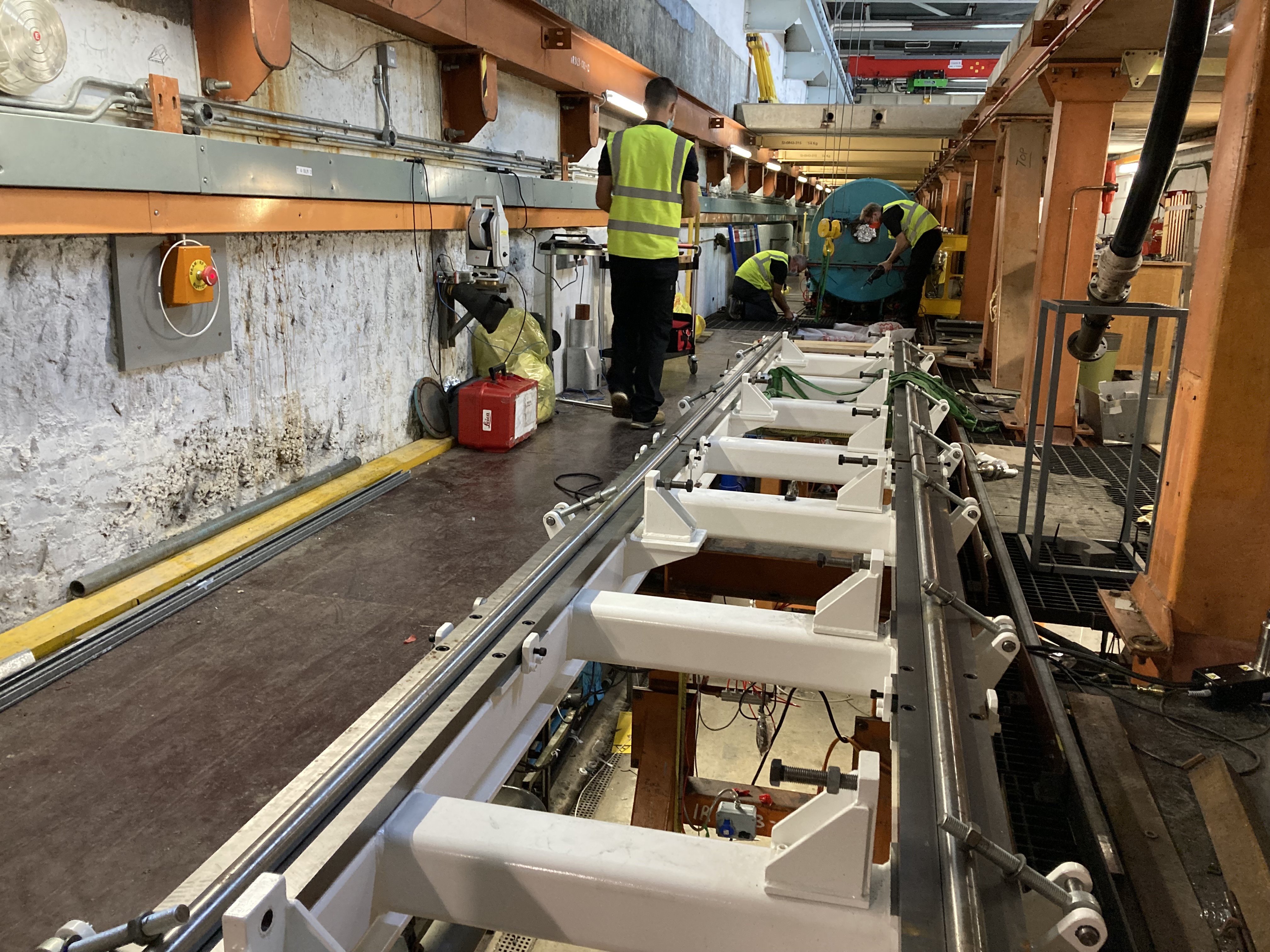
19 July 2021
The old tank IV was removed from the Linac area, using a complex arrangement of internal and external cranes. It has been installed in 1976, so this was a big moment! See below for a timelapse of the removal.


15 July 2021
With the accelerator turned off, the work on the large engineering projects at ISIS have moved on to the next stage. In target station one, the current target assembly is being dissembled and removed. The first to be removed were the ion exchange columns (shown below); these components are now radioactive and need to be contained within flasks before removal. 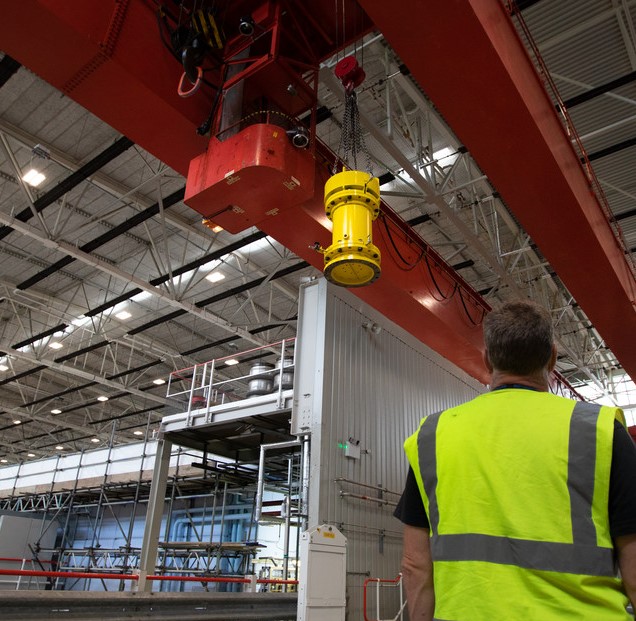
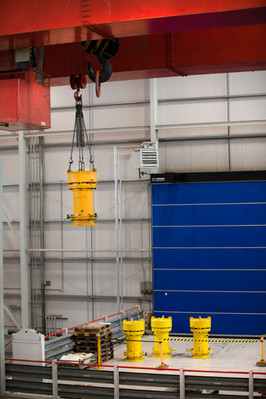
Over in the linear accelerator, the old linac tank IV that is being replaced was prepared for removal (below, left). This is another engineering challenge, as the geometry to bring out the old tank in one piece was only just feasible, and the weight of the tank was close to the limit of the current crane. The new tank is also being taken apart again to prepare for installation (below, right).
